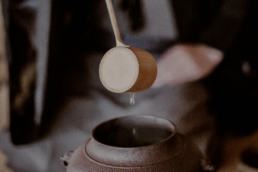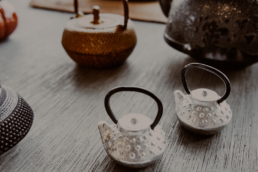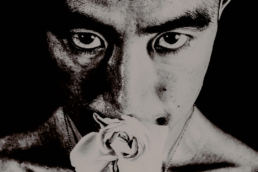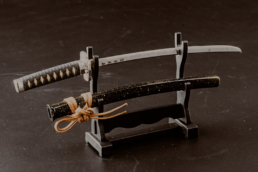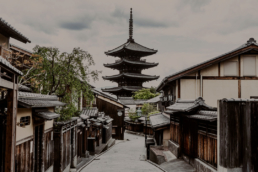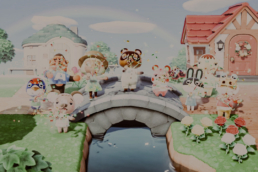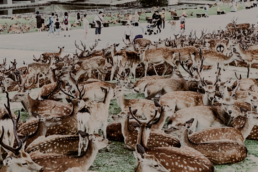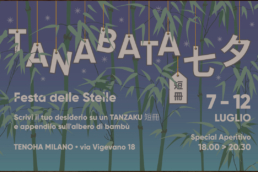Chadō, the Japanese Tea Ceremony
If there is anything in which the Japanese are true masters is in living in harmony with life itself, this is demonstrated by the Japanese tea ceremony, also known as Chadō. A real gift, their innate ability to flow naturally with everything that happens from the smallest everyday gestures. Rooted in the here and now, fully in tune with the present moment.
Chadō, the Japanese Tea Ceremony - 茶道
Guest Author: Flavia
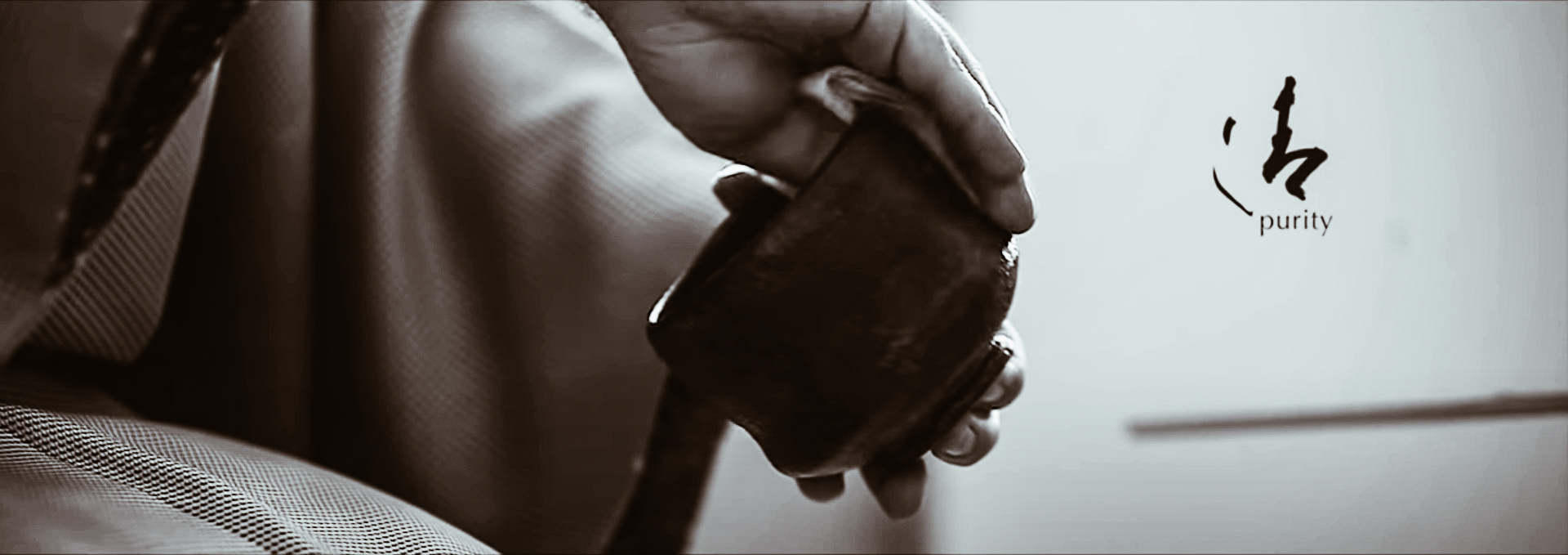
photo credits: YouTube
Therefore, it's not surprising that the people of the Rising Sun have been able to translate this extraordinary talent into various forms of art. They are in fact real ways of living (the so-called Ways - 道, Dō) through which to express their ability to grasp the meaning of existence. The Chadō or Sadō ( 茶道 ), or the Way of Tea, is one of the most significant and appreciated. Otherwise called Cha no Yu (茶の湯) - literally "Hot water for tea" - it is a social ritual aimed at educating the individual. A true philosophy of life and aesthetic form that has strongly permeated Japanese culture. But how did this tradition originate?
The matcha, from southern China in the bosom of Zen
Originally from the Yunnan region, the tea plant has been known for its therapeutic properties since ancient times. Initially, it was in fact used as natural medicine, it will only become a form of "delight" later. It was consumed in a monastic environment, being used by monks to promote concentration during meditation or studies. However, it will land in Japan at the beginning of the Heian period at the hands of Japanese monks who went to China to study Zen (禅, from Chinese chan).
Tradition attributes in particular to the monk Myōan Eisai - who lived between the 12th and 13th centuries - the role of the precursor of the tea ceremony. As it happened, he introduced in Japan the form of Rinzai Zen Buddhism (Linzhi or Linji, in Chinese) and with it a specific method of preserving and preparing tea. In essence, it provides that tea is kept away from light and oxygen and prepared according to the method of suspension (instead of infusion): this allows to better preserve its properties. The tea associated with the ceremony will become known as Matcha (抹茶), that is powdered tea. Actually, from that moment the consumption of tea will begin to spread on a large scale, leaving the monastic and aristocratic circles where it had been confined until then.

photo credits: tesoridoriente.net
Therefore Tea (Cha, 茶) has its roots in the Zen doctrine, which will remain decisive also for the diffusion of Chadō, inexorably permeating it. Zen and theism, therefore, developed at the same pace (since the 12th century). A key role here will be played by the equally nascent Samurai class destined to dominate the scene shortly afterwards. The caste will welcome the Zen doctrine, which will make it totally its own, and the cult of tea as a sort of status symbol.
Rikyū, father of Cha no Yu
After Eisai, other masters will leave their mark on the Chadō still in "embryonic" form. This is Murata Jukō, father of the Wabi-cha style ( 侘茶 ) - already well distinctive of the Japanese style compared to the Chinese one - and Takeno Jō. However, at this stage it cannot yet be configured as a real ceremonial rite. It will be necessary to wait until the sixteenth century for a real codification to take place and transform it into the form that has reached our days.
Creator of this reform, none other than the historic tea master of Oda Nobunaga and Toyotomi Hideyoshi, Sen no Rikyū, whose imprint will be revolutionary. He will go further than Murata Jukō, completely undermining the aesthetic taste of the Shōgun. Before his intervention, in fact, the execution took place focusing on the objects, that is, thought of their performance. With Rikyū, the focus becomes the people and the ceremony becomes less elaborate and more essential. In addition, he sets real rules around the concept of wabi ( 侘び ) - i.e. the beauty that lies in the essentiality and simplicity - applied to the performance of the ceremony and the gestures to be performed. The important Zen vision of Wabi Sabi ( 侘寂 ) - which we will have the opportunity to deepen in a next article - is thus consecrated as a pivotal concept, soul, of Cha no Yu.
Chadō, the four founding principles
4 are the principles Rikyū summarizes for the performance of Cha no Yu. They concern both the people who take part in it and the tools used as well as the room itself. Naturally borrowed from Zen aesthetics, they are:
- Wa (和), Harmony. The absence of imbalances or extremism in the interaction between the surrounding environment, things and people. Particular attention is paid to the interaction between guests and landlord: putting guests at ease becomes a pivotal point.
- Kei (敬), Respect. Recognition for the existence of things and people. A sincere soul is necessary: only an open soul will be able to perceive things and people in their true essence (kokoro, 心) and thus enter into authentic communication.
- You are (清), Purity. The absence of attachment to earthly things. Without such purification, true communion with the All is unattainable. It is taken up symbolically from the roji stone path (路地) placed in the gardens outside the tea houses. The variety of shapes and distances between the stones is not by chance designed to educate the guest already from outside to a conscious exercise of attention.
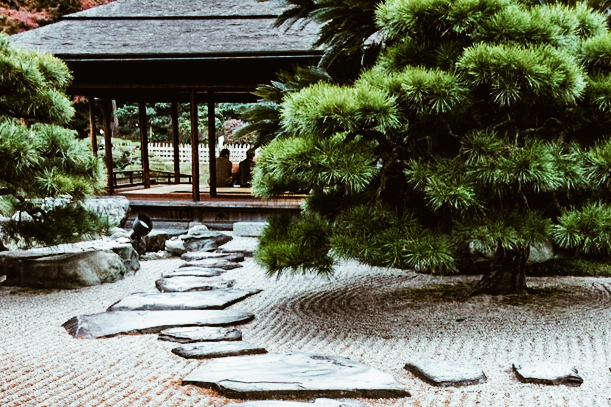
photo credits: iaininjapan.deviantart.com
In a way, the tea ceremony already begins in the garden. Because it helps those who walk this path (a Way) to harmonize with nature even before they set foot in the tea room. The principle is also "evoked" by the symbolic purification of the participants who, once invited to enter by the host, must rinse their mouths and hands.
Jaku (寂), Serenity. The state that is achieved in a natural way by the practice of these three principles already from daily life.
If the hearts of all those present will be open and receptive to the emptiness of that moment if the mind will have left that outside world beyond the garden: a harmony will be born so deep that environment, things and people... will become one. In a perfect fusion where dualism dissolves and it is no longer known where the boundaries of one or the other end or begin.
Chadō, Less is more: beauty according to the Japanese sensibility
In this perspective, negation becomes a positive value, the state of mind par excellence. This is reflected in the research of a frugal style which avoids ostentation and superfluous, already starting from the tea room, the Chashitsu ( 茶室 ).
The latter must be devoid of excessive earthly elements: in the Zen perspective of the master Rikyū it is necessary to limit sensory stimuli as much as possible. Leave space to the void, in order to empty the mind. Then the void itself will give space to the sounds that spontaneously emerge from it and that otherwise too many sensory stimuli would end up eclipsing. Sounds thus assume greater depth and the consciousness is refined. Perception is in fact amplified thanks to silence not only auditory but also visual, olfactory, tactile and gustatory. The senses are literally educated not to be dependent on stimuli, but in this way, they become more receptive. It may seem paradoxical to most people. But if you who are reading have so far understood the sensitivity that underlies this philosophy, you will certainly have understood this too.
The room must, therefore, be minimal, not so much illuminated, "intimate". It must be welcoming. Verbal interactions must be reduced to a minimum, also because non-verbal communication can be done here. Everything is designed in order to create a meditative atmosphere - typical of Zen. It is therefore recommended that we keep our eyes ajar in order to let the images that come into our field of vision flow, avoiding our sense of "feeling" them too much.
The semi-darkness of the room gives back value to the other senses other than sight, usually a little overwhelmed by it. The touch, for example, that emerges in contact with the teacup, in particular, if it is raku ( 楽 ), a symbolic cup in Chadō and Wabi Sabi because of its imperfect shapes that make it unique and unrepeatable. Or, in the case of the traditional Wagashi ( 和菓子, literally "Japanese sweet" ), where the dominant sense would be the taste, we find, on the contrary, also the sight and the other senses involved in a superfine way. But let's dwell on the concept of unrepeatability.
But let's dwell on the concept of unrepeatability.
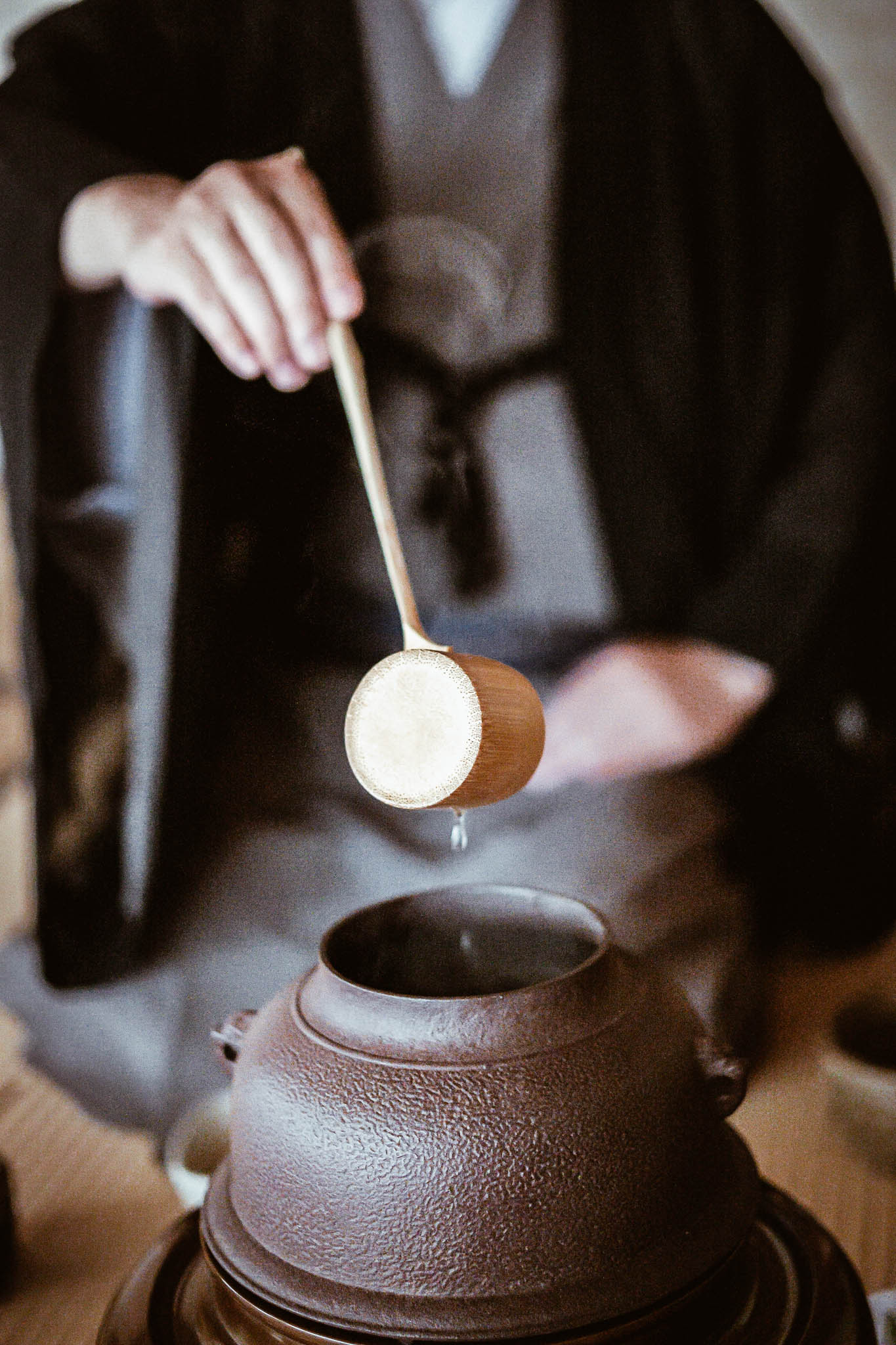
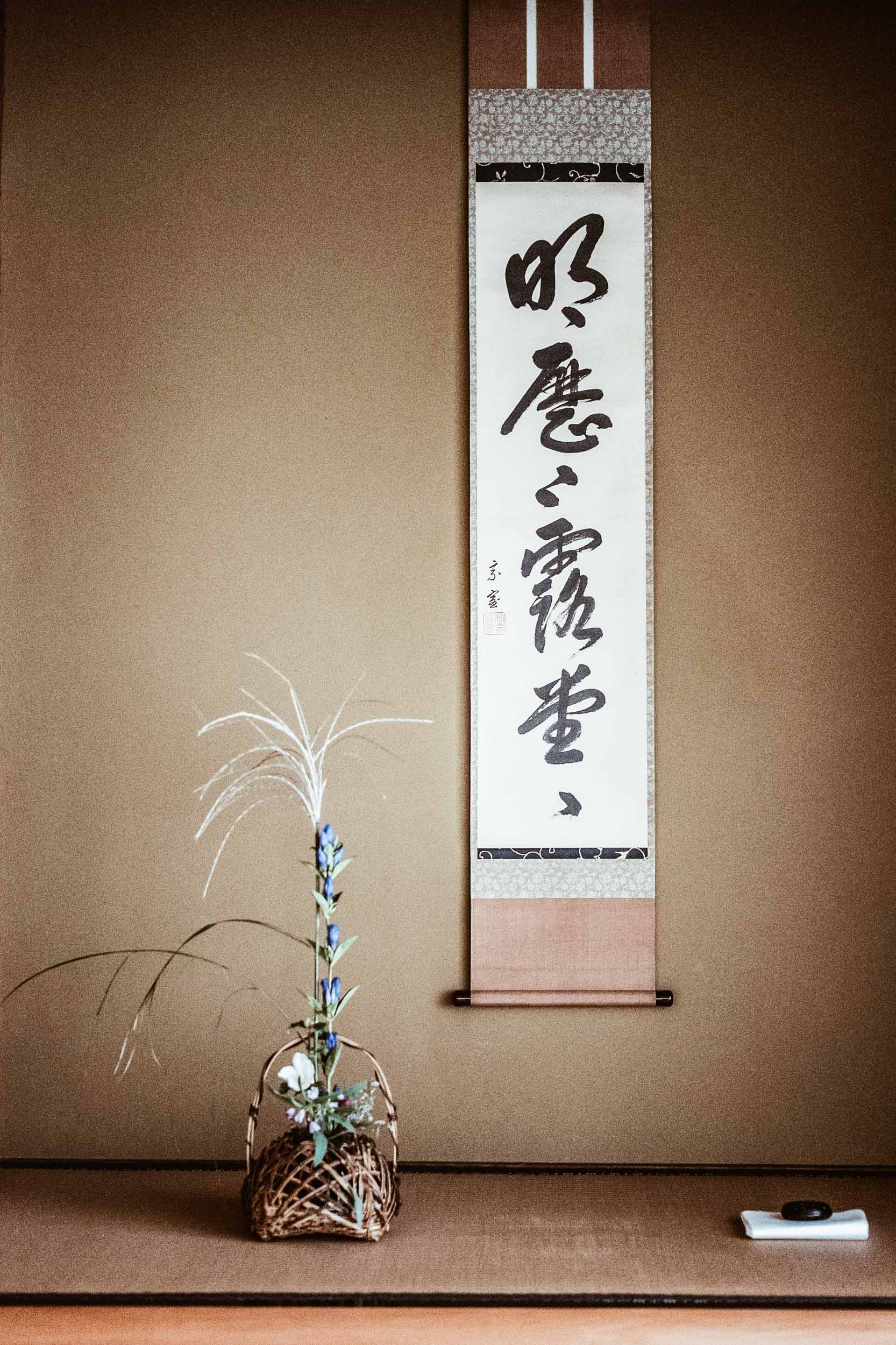
photo credits: moroalberto.com
Ichi go, Ichi e (一 期 一 会), the metaphor of life
Literally "once, an encounter", Ichi go-Ichi and is a Zen expression that refers to the idea of transience. It reminds us how every single encounter is unique and unrepeatable. Yes, in time we can repeat the ritual of Chadō as many times as we want, but each time remains unique in itself and distinct from the others. The atmosphere experienced in each encounter can never be the same the following times. Therefore, each one of them should be appreciated...as an encounter that happens only once in a lifetime.
So in Chadō, so in life: let go past and future. To take from them the knowledge we need for our learning, yes, but just enough not to get stuck with our minds. Otherwise, we run a risk: that of not appreciating in time the things that are with us here and now. Remaining, in that case, with the regret of not being able to see them in their value (remember the Kei, Respect) when they end their time in our lives.
That is when Zen wisdom comes to us, reminding us that this is the time to focus on, in the here and now, appreciating as much as possible what you have now that you have it. You have to live now and live it, in every single unrepeatable moment. But then again, what is the art of Cha no Yu if not life itself?
Kata - Katachi: When form becomes part of you
In Chadō every gesture is not random: movements and breathing must be harmonized, in order to transmit serenity in giving that cup of tea. You should know that Japanese culture attaches great importance to the concept of form (kata, 型), i.e. gestures codified by certain principles. Not schemes that are an end in themselves but a way to achieve a body-mind-spirit fusion and consequently harmony with existence itself (the concept permeates their vision of the world to such an extent that it also has its own small linguistic form).
When a practitioner arrives at embodying kata to the point that they no longer feel as something external to themselves - to be "staged" - then we speak of katachi ( 形) or "internalized forms". Through kata the practitioner learns patience, precision, resilience...and is forged from them. Final goal: the attainment of harmony with oneself and the surrounding world.
Observe-execute, to the point of internalizing: this is the basic approach of all Japanese art forms-disciplines. It is really part of their soul. They do nothing but decline this feeling in various areas of life. A way of life (the Way) that gives rise to forms of art and discipline which, in turn, guide the individual's path of life. A perfect circle that closes...
But the search for the perfect gesture carries within it another magical gift, that of dilating time. The present moment is crystallized and in that moment the depth of the senses puts us in communion with nature.
But beware: it is not an escape from reality. Sometimes for the human mind, the boundary between the two can be very subtle, but it is a mistake: to shun reality means in truth to alienate oneself from being present. No escape, therefore, as well as no attachment (two extremes of avoiding). But lucid, conscious fusion with what is happening in that place, in that moment. With reality.
The Way of tea, therefore, requires a true psycho-physical discipline about oneself and long preparation. So much so that in the process of self-improvement - as in any self-respecting spiritual discipline - the practitioner can be hindered by the human emergence of feelings such as laziness, apathy or other grey areas.

photo credits: moroalberto.com
The ceremony
The ritual is very complex, especially in its extended form. There is, in fact, a traditional version lasting four hours(!) reserved for formal events (Chaji, 茶事 ) and a reduced version for informal occasions (Chakai, 茶会 ). Likewise, Chashitsu can be distinguished in small (Koma, 小間) or large (Hiroma, 広間). The Koma is the wabi-cha room par excellence, while the Hiroma is well suited to more official circumstances.
During the ceremony, the tea water is boiled in an iron or cast iron teapot. When it is ready, pour some into the ceramic cup where the matcha was previously brought. Then, the whole thing is beaten with a bamboo whisk. The appearance of foam indicates that the tea can be served.
But let's see what happens depending on whether we're in a formal or informal event.
茶事Chaji
- Before tea. Since drinking and eating never go hand in hand, the traditional Kaiseki meal is offered first ( 懐石o会席 ). After the meal, Wagashi are offered at a later stage. Different Wagashi will be paired according to whether the tea is dense or not (as we will see shortly also in the Chakai).
- Usucha. The guests individually drink a whole cup of tea, this time no denser, they dry the edges of it and give it back to the master who in turn washes it, dries it, and prepares it for the next guest.
The ceremony in this form is very elaborate, so breaks and even room changes are envisaged.
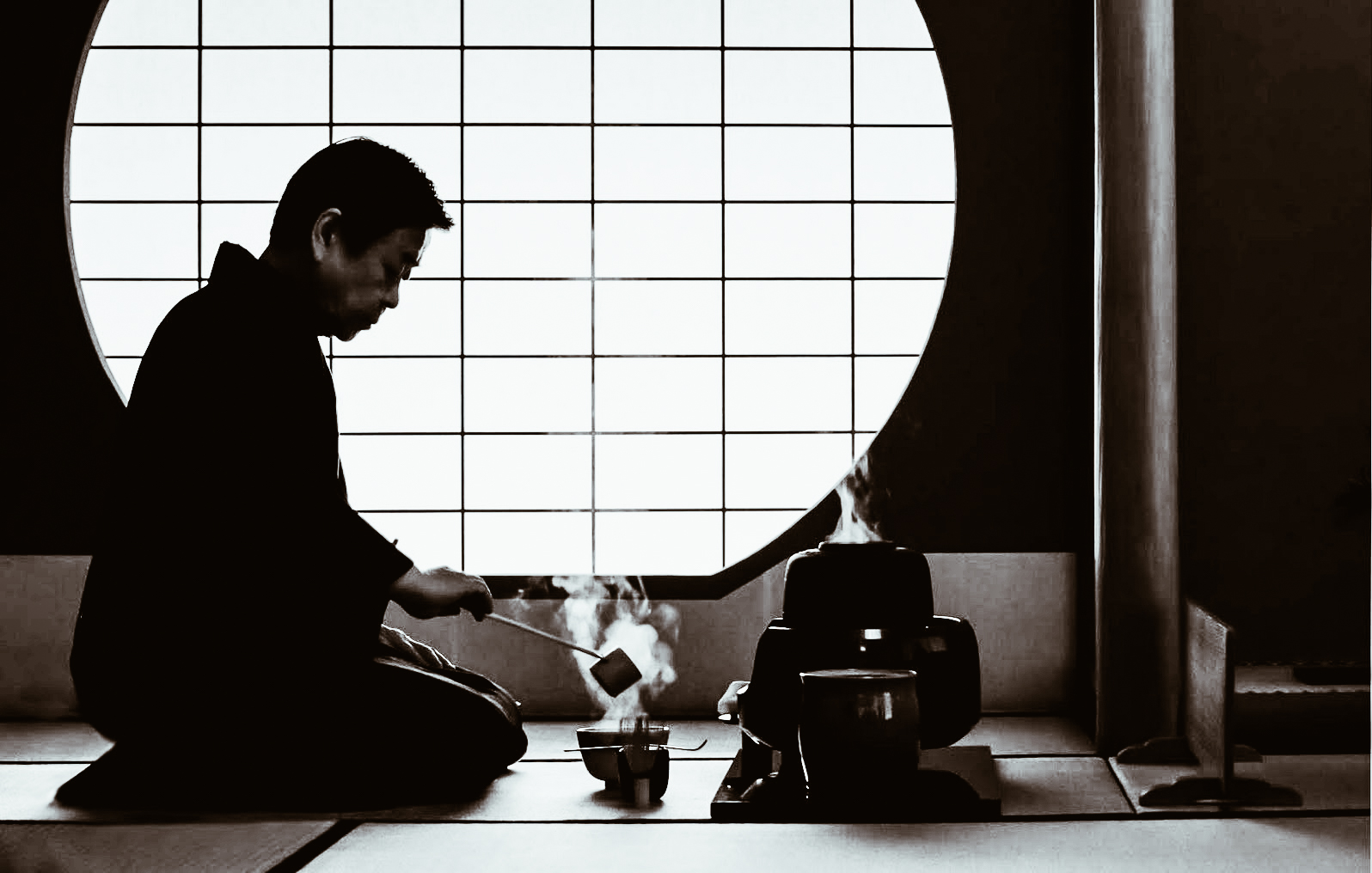
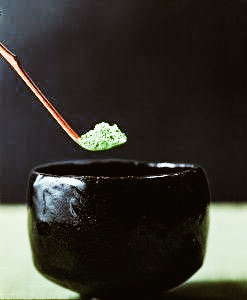
photo credits: pinterest.co.kr, pinterest.it
茶会 Chakai
- Before tea. Here the guests receive only the traditional Wagashi sweets, specifically: Higashi (dry sweets) if Usucha is served, Omogashi (soft sweets) if Koicha is served. In any case, the dessert will have to compensate for the bitter taste of the matcha.
- Koicha or Usucha. As the time available is shorter, only one of the two modes can be presented. It will then be up to the teishu (master of ceremonies) to decide which one to perform.
Everything concerning the behaviour to be held or not during the ceremony is called Otemae (お点前). It is known as "etiquette", but it is much more than that. The very way in which the ceremony is carried out right from the preparations (setting up, cleaning and so on) already constitutes the Tea Route. And therefore, the Otemae.
Ways within the Way, Art within Art
The Tea Route is emblematic. For in itself it contains other forms of art that already constitute a world of their own. Other Paths that intersect and unfold in that of Tea creating a unique association where that perfect fusion - mentioned above - is already taking shape. The artisan technique of Raku ceramics, for example, is perfect for embodying the Zen spirit of the Tea Route: in extracting the still incandescent cups from the kiln, it enhances the naturalness of the irregular shapes randomly generated.
The marvellous art of the Wagashi has evolved parallel to Chadō, finding in it its maximum expression. Influenced by the Yin and Yang philosophy and the five elements, its designs and colours inspired by nature and seasons promise an awakening of the five senses. We also include Chakaiseki (茶懐石, Kaiseki kitchen applied to Chadō), Chabana (茶花, Ikebana applied to Chadō), the architecture itself. Even poetry: among the possible verbal interactions there is the possibility for the landlord to quote a Haiku (typical poetic composition) for seasonal reference. They all remind us that things also have a spirit. And that it must be nurtured, respected, contemplated... just like ours.
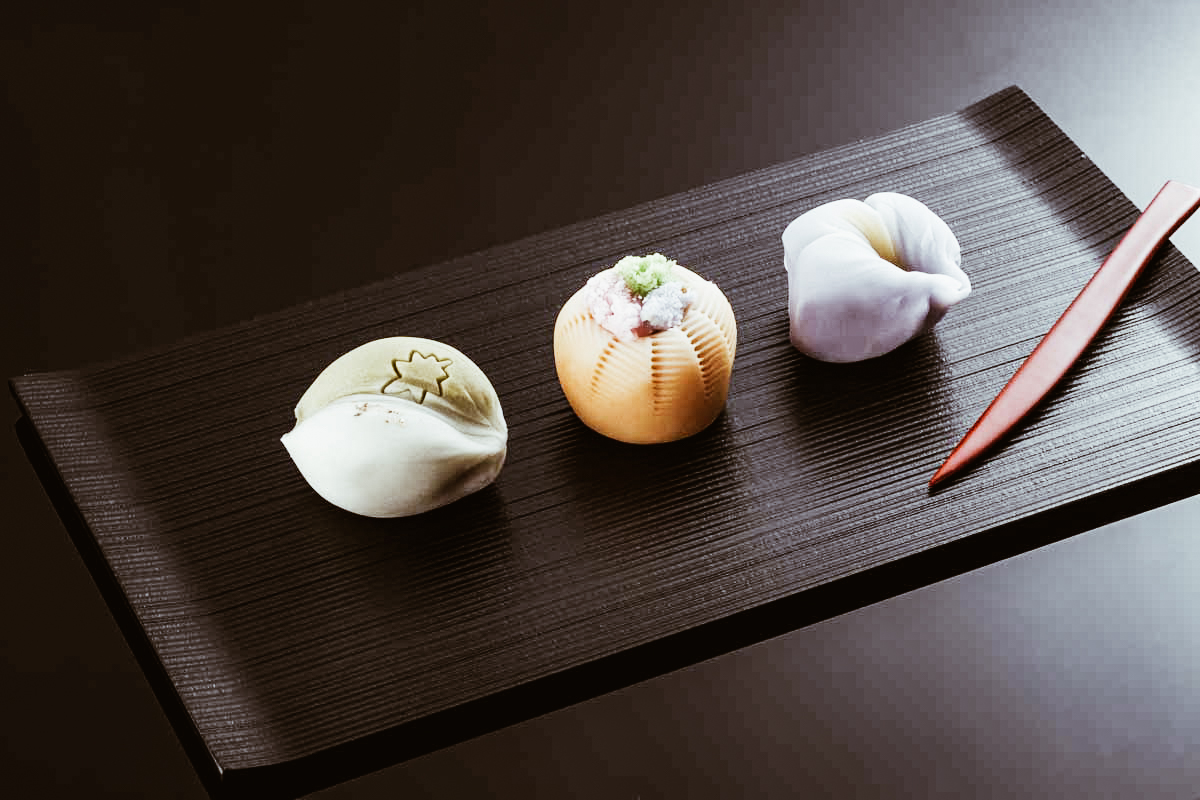
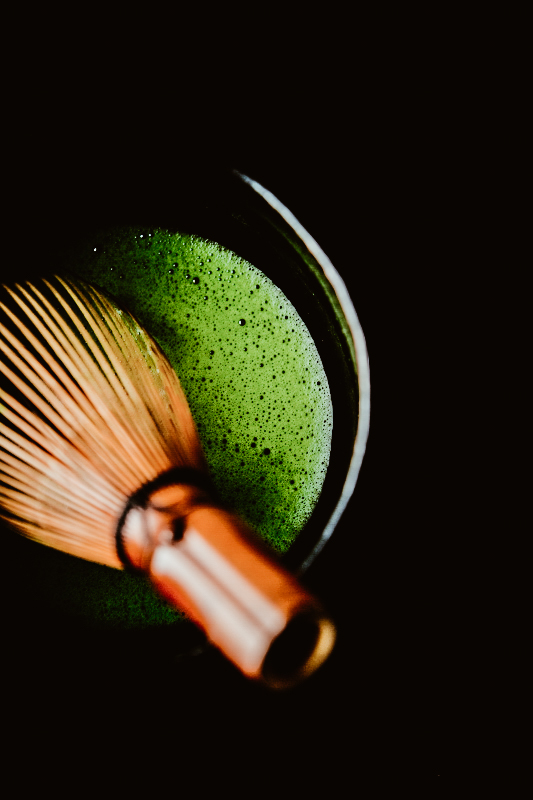
photo credits: sweetsofjapan.com, Flickr
A universe enclosed in a single cup of tea
The Tea Ceremony is, therefore, a meditative practice to all effects that with the "excuse" of a cup of tea leads us to the doorway of our Consciousness. This intent is at the basis of all Japanese art forms: to use earthly things without being harnessed by them. Knowing how to seek, feel, the spirit within the earthly experience inevitably included in it. The key is not to exclude it, but simply not to be harnessed by it.
As a little girl, I myself did not understand the necessity of having to make all those gestures. Now, after experiencing a particular state of emptiness simply thanks to a pair of chopsticks (hashi), everything became crystal clear to me. Understanding in my heart the loving act of these people, in trying to express this truth. That is why only by experiencing it in person can you truly understand.
As of today, in fact, the main Chadō schools come from the descendants of Sen no Rikyū and are the Omotesenke, the Urasenke and the Mushanokojisenke. They present technical and stylistic differences that however do not affect what is the spirit at the base of Cha no Yu. There are also other minor schools. Among these: the Oribe-ryū descending from Furuta Oribe (successor pupil of Rikyū) and the Yabunouchi-ryū founded instead by such Yabunouchi Kenchū Jōchi who was a disciple of Takeno Jōōō as Sen no Rikyū.
Finally, it is worth mentioning the lesser-known Senchadō (煎茶道), the variant "for infusion" of Cha no Yu, which uses the precious green tea leaves. More recent than Chadō, it is born with a more convivial tone and less "spiritually committed", although it is inspired in several aspects. However, it differs in that it is less rigid and more focused on aesthetic pleasure and fine utensils.
Focus on: Nambu ironware
If we think of typical Japanese furniture, we immediately think of an iron teapot, also known as Nambu ironware.
The Nambu ironware and its history
Author: Erika | Source: Tokyo Weekender
Nambu Tekki, or Nambu ironware, is a specific method typical of the city of Morioka in Iwate Prefecture. Created in the middle of the Edo period, this art is named Nambu after the feudal domain of the same name. Modern techniques also use the molten metal produced near Morioka, in Sendai or the present-day town of Oshu.
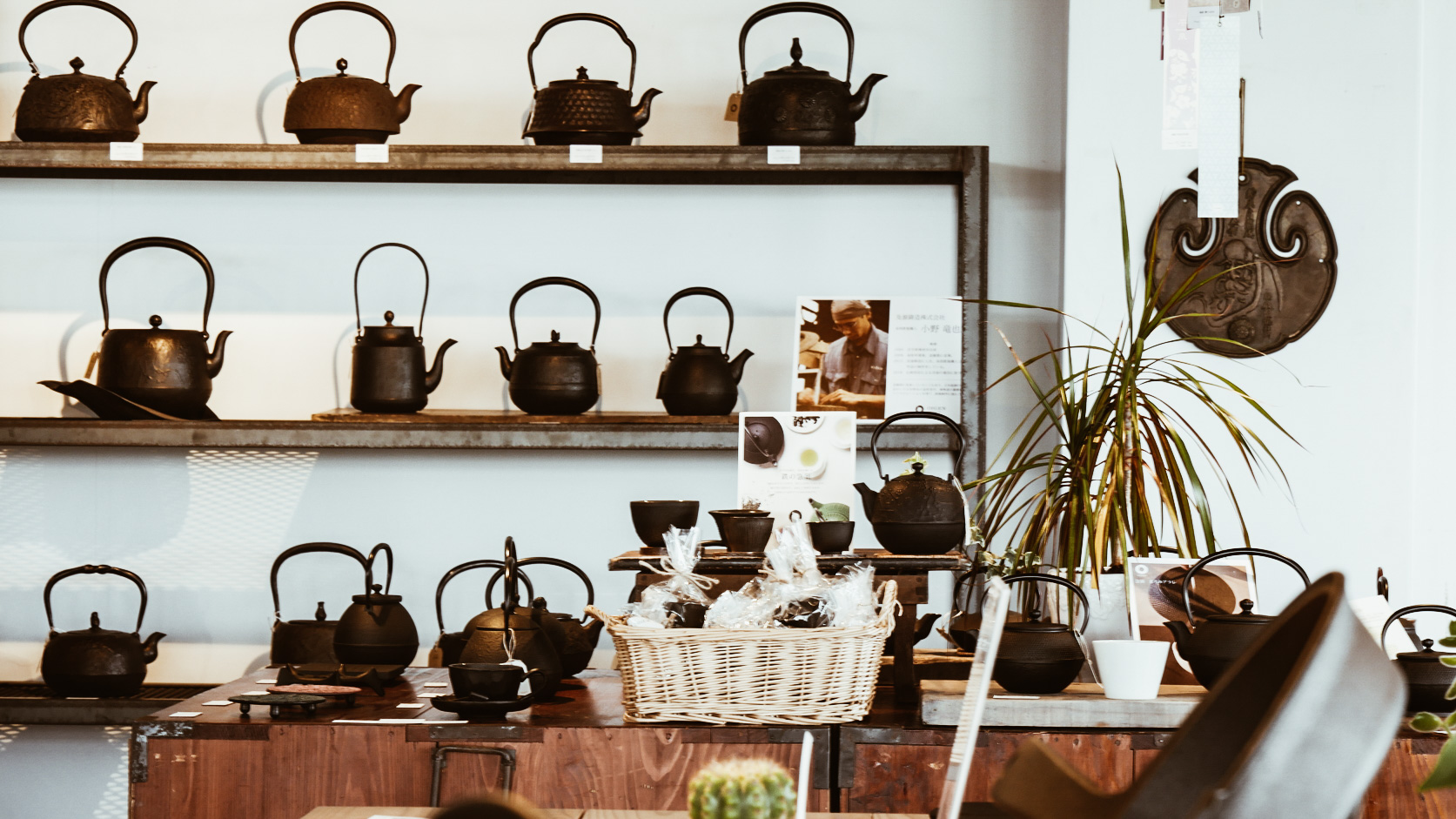
Rust-resistant, durable and well-insulated, these objects provide uniform heat circulation. In fact, the outside of the kettles has an irregular texture called ploughing or hail. This is often used in Nambu ironware dishes and kettles are the representative product. However, the various models change from artisan to artisan because each artist is free to create his or her own model at will.
The History of Nambu ironware
Nambu ironware products sink their history into the production of tableware for the Tea Ceremony during the homonymous domination in the middle of the 17th century. Thanks to the abundance of iron resources, Morioka was a perfect area for the foundry industry.
In fact, in 1659, a feudal lord who wanted to promote the tea ceremony ordered Nizaemon Koizumi to move to Kyoto. It was here, in the area around the castle in Nambu, that the kettles began to be made.
The Koizumi family
Craftsmen par excellence during the Nambu domain, this family launched for the first time the pots used for the tea ceremony. The tea casting technique and control were passed down from father to son. Not only traditional products, but this family was also the focus of innovations for the time. In fact, the famous Nambu Iron Kettle was invented by the third generation of the Koizumi family. The Taisho Emperor himself, who reigned from 1912 to 1926, visited the Tohoku region for this family. In fact, in 1908, on the occasion of the visit, the eighth generation of the Koizumi showed the emperor the production process of these iron tools. This event was so famous that all the national newspapers of the time talked about it. In fact, even today, all the pieces produced in the Morioka and Mizusawa areas in Iwate are still called "Nambu Ironware".
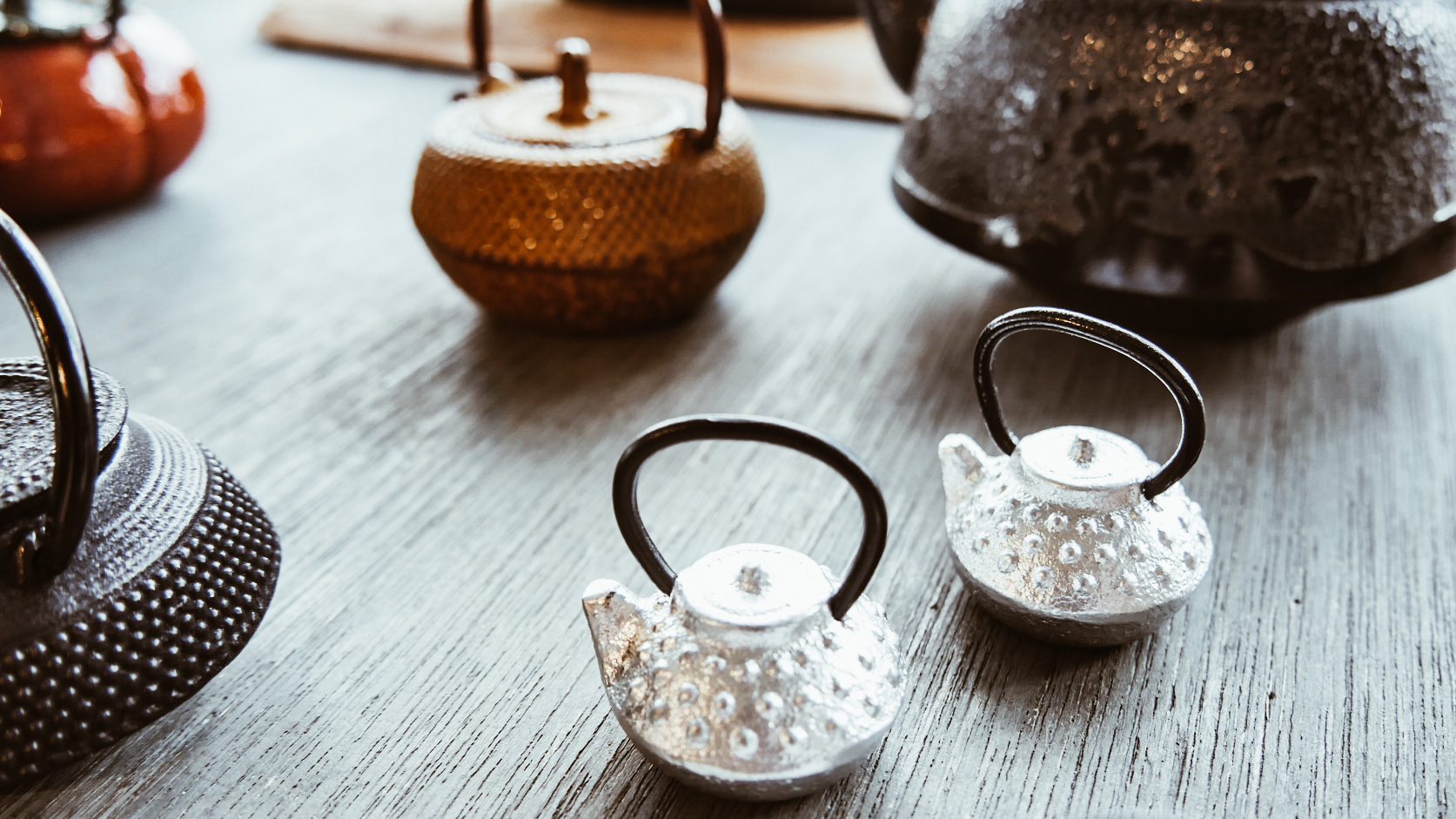
More than just tea
Although the products related to the tea ceremony are the most famous among the Nambu ironware, there are many other items related to the home that can be purchased. In fact, Western kitchen cooks know that one of the best investments you can make is a cast iron frying pan.
However, other Nambu ironware items that are worth buying are the furin (the Japanese windchimes), incense holders, small decorations but also chopsticks holders.
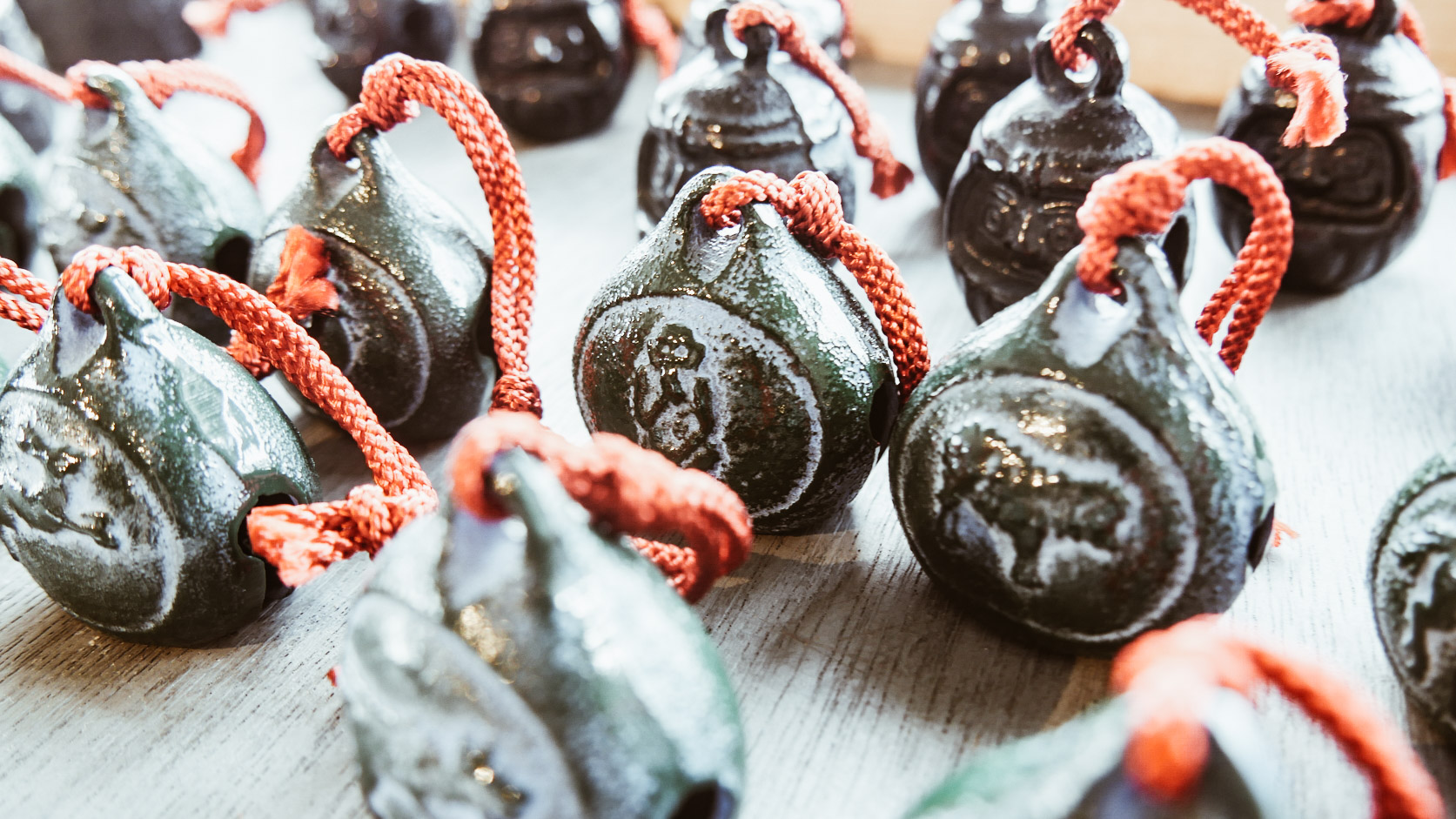
Have you ever bought any of these items or would you like to take some? Let us know in the comments or on our Facebook page!
Japan History: Yukio Mishima
Yukio Mishima pseudonym of Kimitake Hiraoka (Tokyo, January 14, 1925 - Tokyo, November 25, 1970), was a Japanese writer, playwright, essayist and poet and this year marks the 50th anniversary of his death.
50 years since Yukio Mishima's death
Author: SaiKaiAngel
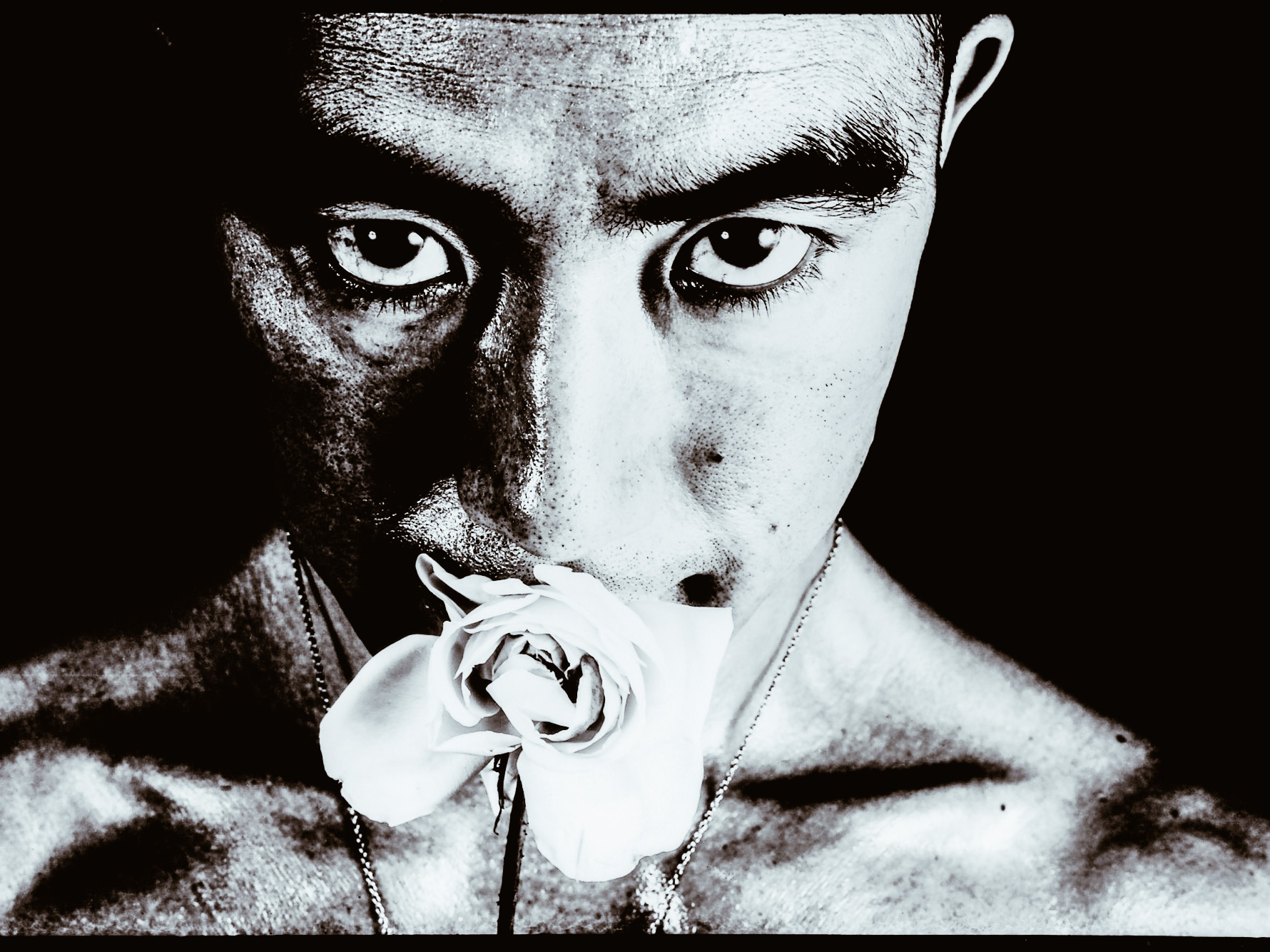
photo credits: @williert
Mishima was a highly controversial character, considered close to Fascism in Europe and, according to many critics, a nostalgic Japanese nationalist. Alberto Moravia called him a decadent conservative. The two met in Mishima's Art Nouveau western home in a suburb of Tokyo. Yukio Mishima, on the other hand, called himself apolitical and anti-political. Strongly patriotic, he also inspired numerous characters of his works, and the cult for the Emperor, seen as an abstract and/or semi-divine ideal, the embodiment of the essence of traditional Japan.
Kimitake Hiraoka was one of the few Japanese authors to have immediate success also abroad. His numerous works range from the real novel to the modernized and readapted forms of traditional Japanese theatre Kabuki and Nō. Yukio Mishima has revisited the Nō theatre in a modern key.
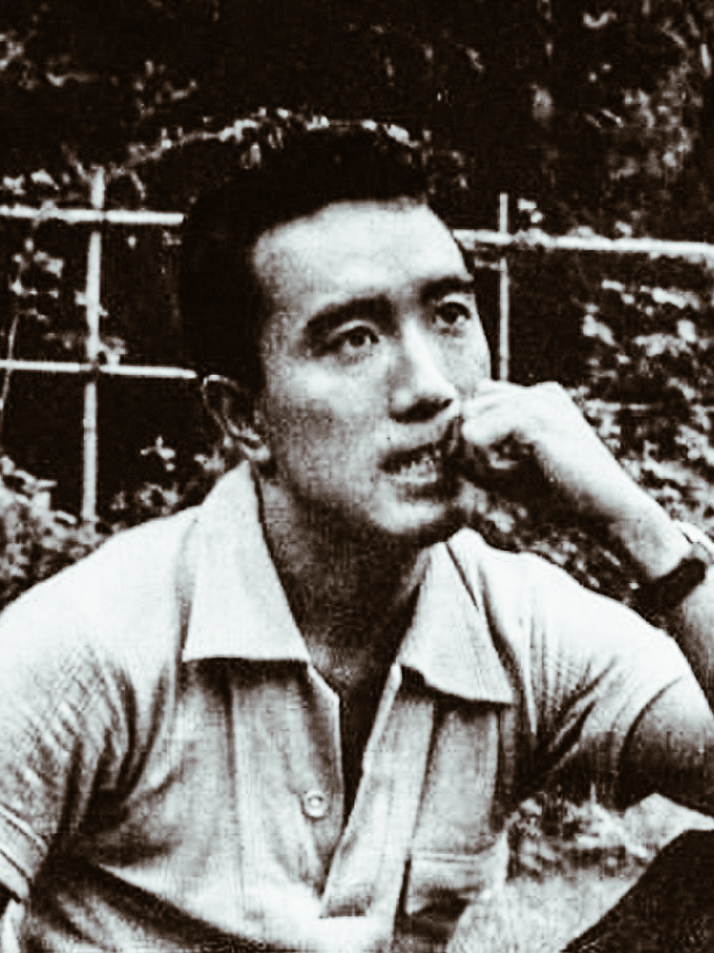
photo credits: thereaderwiki.com
The life of Yukio Mishima
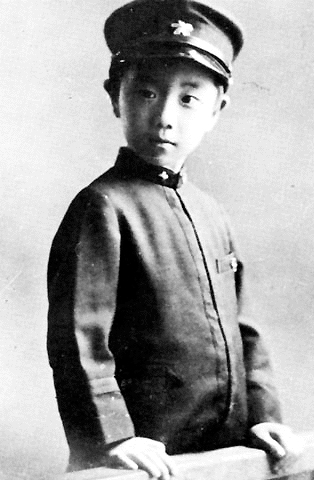
photo credits: wikipedia.org
Yukio Mishima was born in Tokyo on January 14, 1925, in the home of his paternal grandparents, Jotarō Hiraoka and his wife Natsuko. Her parents, Azusa and Shizue, lived together with her grandparents and her grandmother who had an unhappy marriage, assumes all responsibility for the education of the child, usurping the role of the mother. It will be his grandmother to bring the child closer to classical literature and the forms of the theatre Nō and Kabuki.
The relationship that little Kimitake Hiraoka had with her grandmother was something very obsessive, even his mother was allowed to visit him only for breastfeeding.
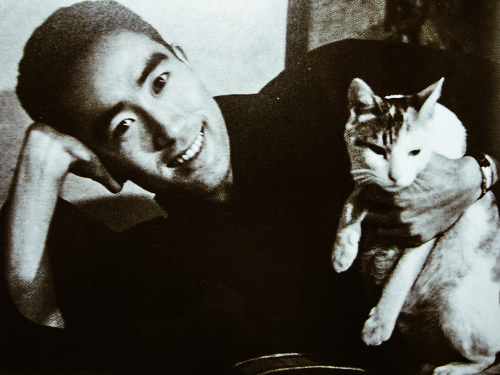
photo credits: paola1chi.blogspot.com
Grandmother never allowed her grandson to leave the house until Hiraoka escaped from her grandmother stolen from her mother in 1934.
These and other experiences of childhood and adolescence are reported in the novel Confessions of a mask of 1949, in-depth self-analysis of his life.
From 1931 he began studying Gakushūin, the school of the Peers, always thanks to the advice of his grandmother. In this school, most of the students were part of the aristocracy. Those who were not aristocrats were called "outsiders". With this school, students became more warriors than writers and Kimitake Hiraoka's poems were published in the school magazine.
His first work, Hanazakari no Mori (The forest in bloom) was completed in 1941 and was heavily influenced by the Japanese romantic school (Nihon romanha). The professor of Gakushūin letters, Shimizu Fumio, immediately noticed his classical style. Bungei Bunka magazine published the story and from there he began to use the pseudonym Yukio Mishima. Hanazakari no Mori will be published in book form together with other short stories: its success will make the name of the writer known to the public for the first time.
After school, convinced by his father, he enrolled in law university. After graduation, he won a competition as a state official at the Ministry of Finance. During the period of work at the Ministry, he lived a "double life": state official until the evening and writer at night, sleeping no more than three or four hours.
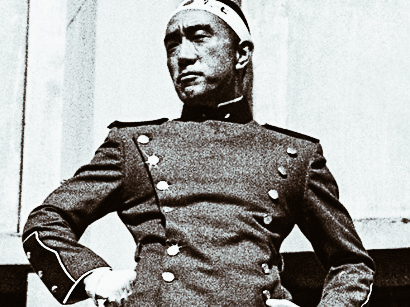
photo credits: oltrelalinea.news
Early works
In 1946 he presented two of his works to the Nobel Prize winner Yasunari Kawabata. Between the two there was a feeling of profound esteem more than that which actually binds teacher and disciple.
In 1948 he began his work at the Kindai Bungaku magazine, linked to leftist circles. Yukio Mishima always tried to avoid any political argument in his novels, apart from the descriptive character that we find in After the feast and the Horses on the run, in fact, Yukio Mishima became part of the leftist group only to get more contacts with the intellectual world.
After the publication of Kamen no Kokuhaku (Confessions of a mask) in June 1949, he received recognition from critics and sales. Between 1950 and 1951 he published three important novels: Thirst for love, The Green Age (1950) and Forbidden Colors (1951). In the novel Thirst for the love he returns to the third-person narrative.
In 1951 he visited the United States, Brazil and Europe as a correspondent for Asahi Shinbun. In Shiosai (The voice of the waves 1954) and the trip to Greece marked the beginning of a new life for Mishima: from 1955 he began to devote himself to bodybuilding, and to kendo.
Yukio Mishima: marriage and sexuality
Yukio Mishima got married on 11 June 1958 with Yoko Sugiyama, under the advice of the family; two children were born from the union, Noriko (2 June 1959) and Ichiro (2 May 1962).
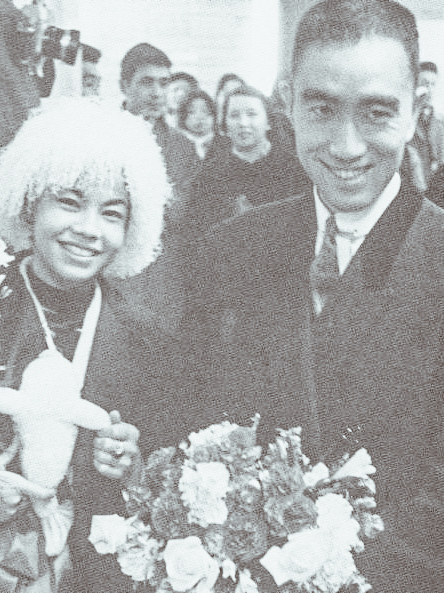
photo credits: paola1chi.blogspot.com
Yukio Mishima's sexual orientation was highly controversial, due to some of his visits to Japanese gay bars. Many testimonies saw him as the protagonist of homosexual relationships with for example the writer Jiro Fukushima. The latter wrote a novel describing very explicit details of the relationship with Mishima. At that point, Mishima's children started a fight for violating privacy.
At that time Yukio Mishima entered into a relationship with Eikoh Hosoe and became the model for some of his photos of Bara-kei, 1961–1962. Abroad, the title will be Killed by Roses or Ordeal by Roses.
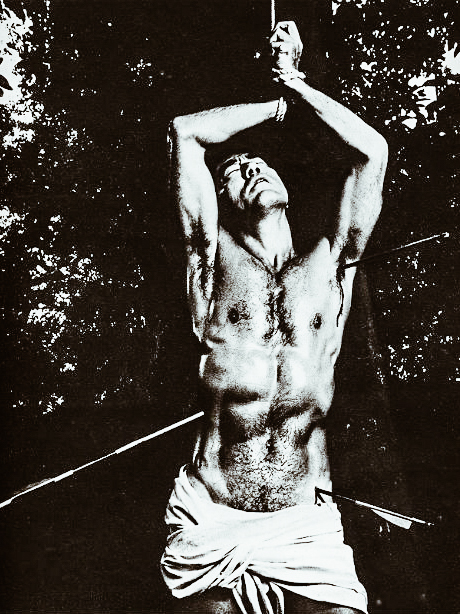
photo credits: dangerousminds.net
He began his acting career in the film based on Yūkoku (Patriotism, 1966), the story of a young officer who decides to do seppuku with his wife. The film was directed, written and played by him. In addition to this, his photos as a bodybuilder and kendōka are published in various newspapers, as well as news of the training periods together with the Jieitai (Japanese Self-Defense Force) and the foundation of the Tate no Kai (Shield Society), his "private army. "
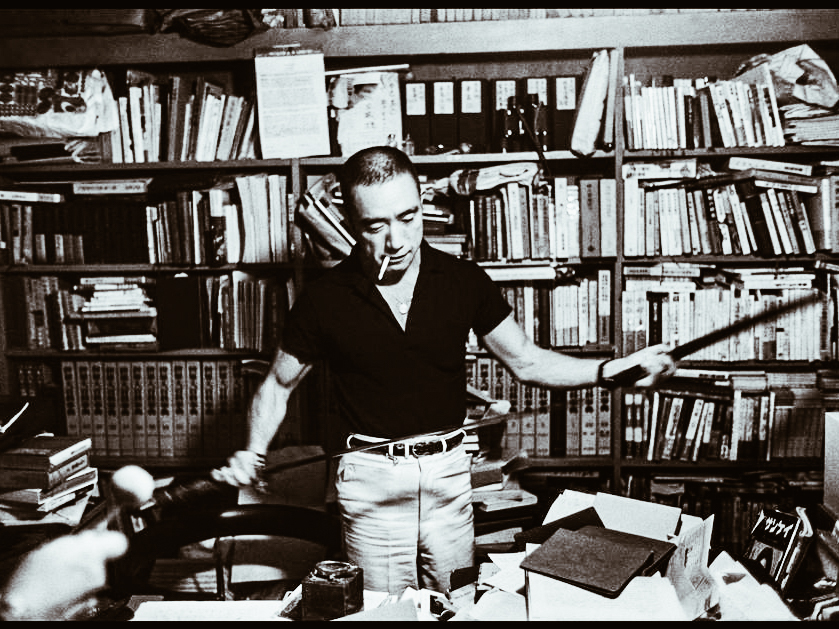
photo credits: lintellettualedissidente.it
The tetralogy Hōjō no Umi (The sea of fertility) began in 1965. The last volume is published in 1970.
Suicide
"A life that suffices to be face to face with death to be scarred and broken, perhaps it is nothing but a fragile glass." (from Spiritual lessons for young samurai and other writings)
Yukio Mishima had always been obsessed with the idea of death and decided to combine this unease with the ideas of traditionalist patriotism.
On November 25, 1970, at 45, Yukio Mishima gathered the most important members of the Tate no Kai ("Association of Shields"), which he himself had found, and occupied the office of General Mashita of the self-defence army. From the balcony of the office, in front of a thousand men of the infantry regiment, as well as newspapers and televisions, he gave his last speech: exaltation of the spirit of Japan, condemnation of the 1947 constitution and the San Francisco treaty, which they made the Japanese national feeling enslaved by westernization.
«We must die to restore Japan's true face! Is it good to have a life so dear to let the spirit die? What army is this that has no more noble values than life? Now we will testify to the existence of a higher value than attachment to life. This value is not freedom! It's not a democracy! It's Japan! It’s Japan, the country of history and traditions that we love. "It was November 25, 1970 in front of an audience of young soldiers, in which after this speech and after praising the Emperor, Yukio Mishima practised seppuku by piercing his belly and then having his head beheaded. Together with him, his most trusted friend and disciple, Masakatsu Morita, committed suicide too.
The choice of Seppuku
The date and manner of killing himself were not random, but chosen as the whole meaning of his life, the purpose for which it had been devoted. It all ended with the extreme act of the Japanese man: seppuku. This sacrifice was based on Wang Yangming's Chinese teaching that "knowing and not acting means not knowing".
Just before seppuku, he had delivered to the publisher the last part of the tetralogy The sea of fertility, which was however completed three months earlier, but with the date "November 25, 1970" just as a testament. He had organized his departure from the scene very coldly, he also left a note: "Human life is short, but I would like to live forever."
The three survivors went to justice and were sentenced to four years in prison for occupying the ministry, but were released for good conduct after a few months.
Summarizing it all, we can say that according to Yukio Mishima the relationships between human beings are reduced to a cloudy and confused mixture of good and evil, of trust and diffidence, distilled in small doses. Despite all this, if the group of people manages to make a pact based on a purity of mind, consumerism, relativism, nihilism and individualism become nothing. Yukio Mishima managed to transform his existence into something more important and profound, thanks to the way he had decided to live and die.

photo credits: wikimedia.org
His works
Romances
The forest in bloom (花 ざ か り の 森 - Hanazakari no mori, 1944)
The doll's house (雛 の 宿 - Hina no yado 1946-1963)
Confessions of a mask (仮 面 の 告白 - Kamen no kokuhaku, 1949)
Thirst for love (愛 の 渇 き - Ai no kawaki, 1950)
The Green Age (青 の 時代 - Ao no jidai, 1950)
Forbidden colours (禁 色 - Kinjiki, 1951)
Midsummer Death (真 夏 の 死 - Manatsu no shi, 1952)
The voice of the waves (潮 騒 - Shiosai, 1954)
A locked room (鍵 の か か る 部屋 - Kagi no kakaru heya, 1954)
Five modern Nō (近代 能 楽 集 - Kindai nōgaku shū, 1956)
The golden pavilion (金 閣 寺 - Kinkakuji, 1956)
A wavering virtue (美 徳 の よ ろ め き - Bitoku no yoromeki, 2007)
Kyōko's house (鏡子 の 家 - Kyōko no Ie, 1959)
After the banquet (宴 の あ と - Utage no ato, 1960)
Animal’s playthings (獣 の 戯 れ - Kemono no tawamure, 1961)
Wonderful star (美 し い 星 - Utsukushii Hoshi, 1962)
The taste of glory (午後 の 曳 航 - Gogo no eiko, 1963)
The school of meat - Nikutai No Gakko, 1963
The sword (1963)
Music (音 楽 - Ongaku, 1965)
Madame de Sade (サ ド 侯爵夫人 - Sado kōshaku fujin, 1965)
The voice of heroic spirits (英 霊 霊 聲 - Eirei no koe, 1966)
Evening dress (夜 会 服 - Yakaifuku), (1966-1967)
My friend Hitler (わ が 友 ヒ ッ ト ラ ー - Waga Tomo Hittorā, 1968)
The sea of fertility (豊 饒 の 海 - Hōjō no umi), 1968-1970, tetralogy composed of:
Spring snow (春 の 雪 - Haru no yuki, 1968)
Horses on the run (奔馬 - Honba, 1969)
The temple of dawn (暁 の 寺 - Akatsuki no tera, 1970)
The mirror of deception (天人 五 衰 - Tennin gosui, 1970)
Middle Ages & The Palace of the Roaring Deer (Mishima, history and secret affairs) (Chūsei, 1945–46 + Rokumeikan 1956)
Essays
1967 - Apollo's cup (ア ポ ロ の 杯 - Aporo no Sakazuki, 1967)
The way of the samurai (葉 隠 入門 - Hagakure nyūmon, 1967)
Sun and steel (太陽 と 鉄 - Taiyō to tetsu, 1970)
1988 - Spiritual lessons for young Samurai (若 き サ ム ラ イ の た め の 精神 講話 - Wakaki Samurai no tameno Seishin kowa, 1970): a collection of essays including the proclamation read by the author a few moments before the ritual suicide.
1997 - Letters 1945-1970 (川端康成 ・ 三島 由 紀 夫 往復 書簡 - Kawabata Yasunari ・ Mishima Yukio Ohfuku Shokan, 1997), SE (ISBN 88-7710-543-7): correspondence between Mishima and Yasunari Kawabata.
Nikken Cutlery makes you feel like real samurai
Nikken Cutlery not only decided to explain to you how Oda Nobunaga and the greatest Samurai cut the tags from their clothes, but they also created the way to make you do the same nowadays!
Nikken Cutlery makes you feel like real samurai
Autore: SaiKaiAngel | Fonte: Soranews24.com
In ancient times, the Samurai never left the house without their sword, because they didn't know when they should defend themselves. Nowadays, luckily it's less likely to meet enemies or brigands on the street (hopefully!), but still, the need of having to cut something or open a snack could happen. How nice would it be to be able to open a snack with this set of mini scissors in the shape of the real and historic katana? Enjoy the samurai spirit into everyday life!
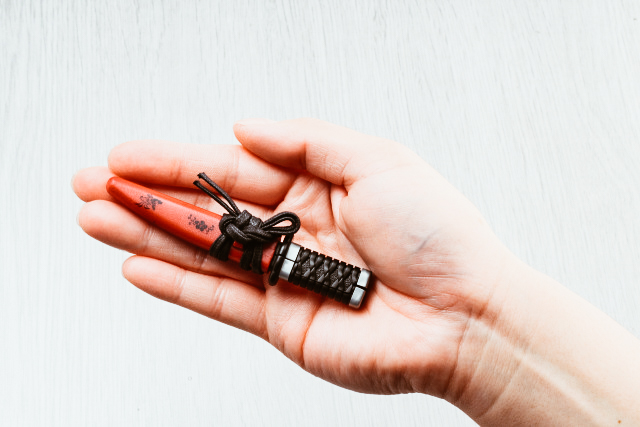

If you look carefully, you can also notice the famous hamon on the metal of these cutters in the shape of a katana, do you know what it is? The hamon (刃 文) is the line of tempering that characterizes the katana obtained through differentiated tempering.
A particular type of "differentiated" hardening between the back and the wire produces a slightly different colour line on the cutting edge, called hamon (刃 文). The shape of the hamon is an identifying sign of the age of the blade and of the author. In fact, the real katana connoisseur, looks at the hamon immediately. Obviously, Nikken Cutlery has also remained faithful to this for these special cutters.


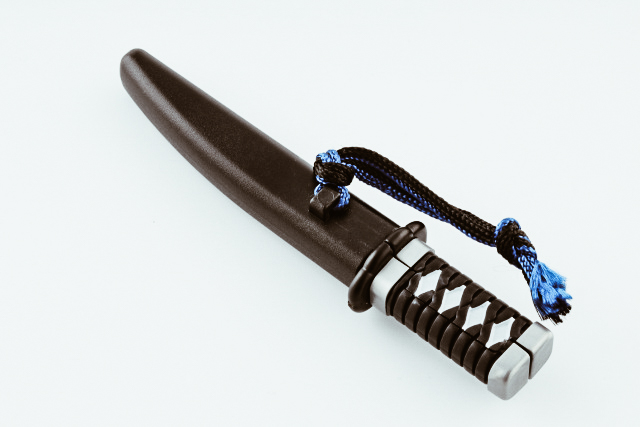
Nikken Cutlery, which is based in the city of Seki in the prefecture of Gifu, offers three models:
- First model: based on the Heshikiri Hasebe, the famous sword of the warlord Oda Nobunaga.
- Second model: Izumi no Kami Kanesada from Hijikata Toshizo, deputy commander of the 19th century Shinsengumi group.
- Third model: it comes from Shinsengumi, in the form of Yamato no Kamiyasusada, the sword of Okita Soji, a member of Shinsengumi.
And there’s more! The mini katana is equipped with a mini katanabukuro (the cloth container), with the blue and white Shinsengumi motif for the swords of Hijikata and Okita, or purple for the Nobunaga katanas.

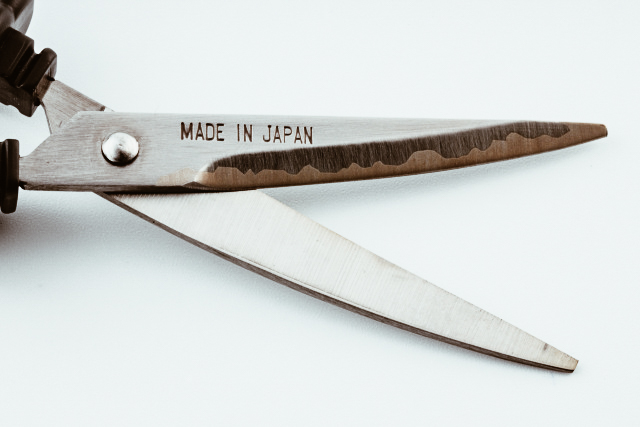
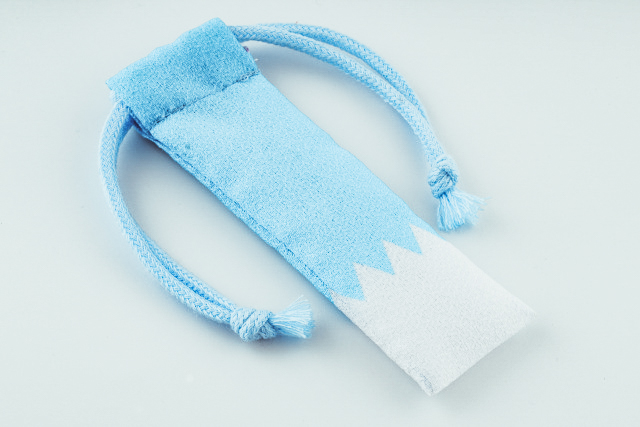
And again! Nikken Cutlery has decided to make you a Samurai also in the office. It’s true, their skills have also expanded in the creation of office tools and we are talking about surprising katana-shaped letter openers with the possibility of personalized engravings. So you want to open the letters like a real samurai? Not a problem thanks to Nikken Cutlery!

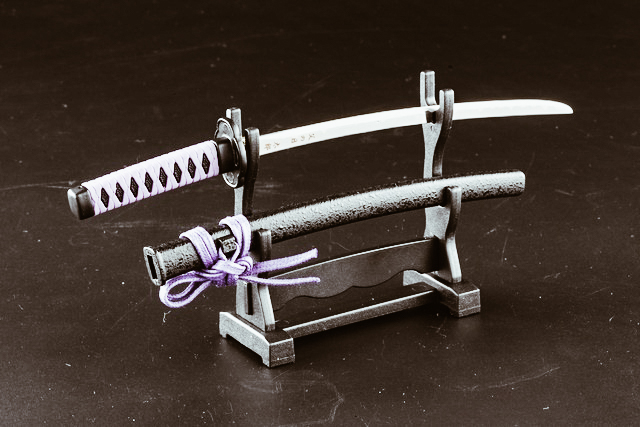
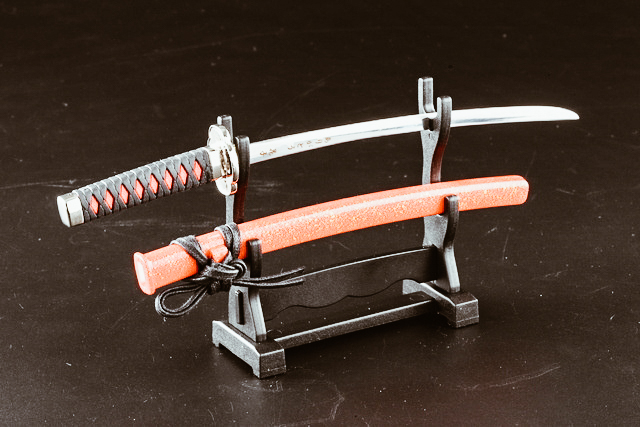
Also here you can choose among three varieties of katana letter openers. Each of them is equipped with support, so you can show your warrior spirit to everyone and with pride!
- First model: "Iron Cloud". Its handle is black and gold, and its sheath seems coated with lacquer since it is a glossy black with golden sparkles.
- Second model: "Scarlet Gold Cloud", with an elegant black and red hilt and a red sheath with splashes of gold.
- Third model: "Black Grains of Rock", which has a purple and black hilt and a black sheath with a rough texture that appears to have been roughly carved from lava rock.
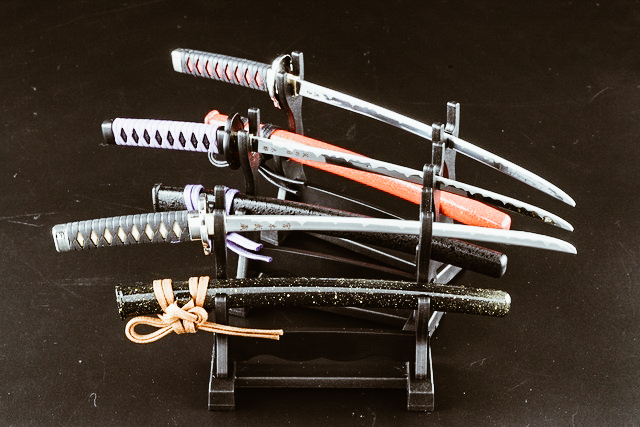
All sheaths are hand-painted by craftsmen, so each of them will be unique, as the blades are always created by Seki craftsmen. Each blade will have a very tapered edge but don't worry, they are specially designed not to cut human skin. It is not a real weapon, be quiet warriors! In addition, the blade is carefully hardened with a heat treatment that uses traditional blacksmith techniques and makes them resistant.
In case you are interested in the very personal engraving, these are made on the blade near the hilt and they can be names, messages, given all within eight kanji, hiragana and katakana characters or 15 Roman letters and numbers including spaces.

Don’t miss the opportunity to dress your day with Japanese tradition, rely on Nikken Cutlery!
For more information on these products: Nikken Cutlery official site | Twitter
Photo Gallery: Kyoto without tourists
The pandemic is slowly passing and the tourism industry in Japan, as well as in Italy, has suffered a severe blow. We are not yet entirely allowed to resume travelling, but it is at these times that we have to find the beauty of things. We also refer to the possibility of being able to discover landscapes and corners of cities that we could not see before, often also because of tourists. As a highly desirable destination for tourists, Kyoto has developed a love-hate relationship with visitors. With 8.31 million tourists from overseas, the ancient capital is definitely one of the most popular cities in Japan.
Kyoto without tourists, a leap into the past
Author: Erika | Source: The Japan times
However, tourism is always a bit of a double-edged sword. While it prunes a lot of revenue to the visited countries, it also leads to overcrowded cities. In tourist places like Kyoto, it is really rare to be able to enjoy the landscapes without visitors. Nevertheless, due to COVID-19 and the closing of world borders, the number of visitors has dropped dramatically, leaving many of these places undisturbed. Through these photos, taken by the reporters of The Japan Times at the end of April, we can see a deserted city and admire its monuments in all their splendour.
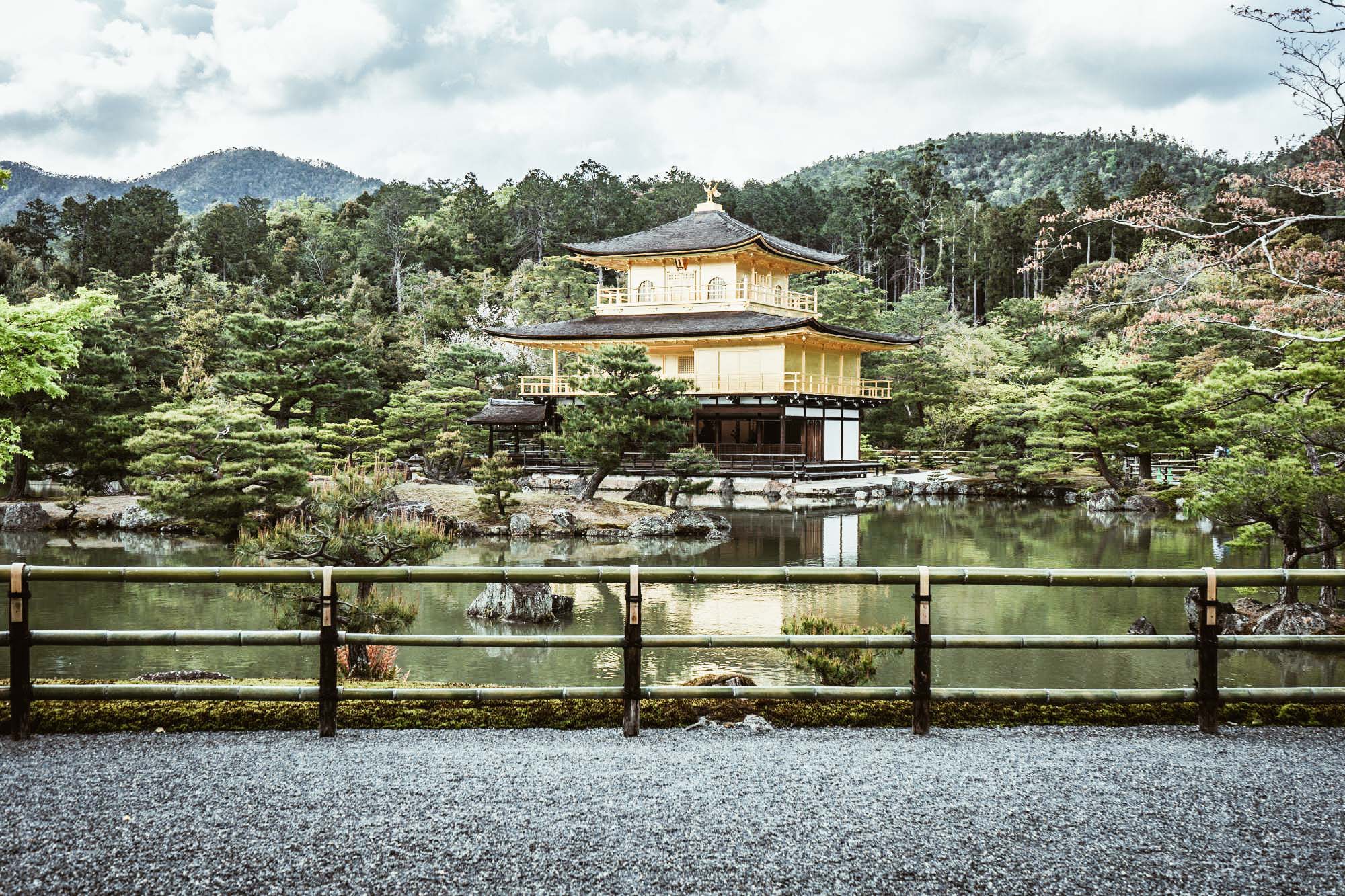
One of the most famous sites and destination of many tourists is certainly the Kinkakuji, also known as the Temple of the Golden Pavilion. Declared a UNESCO World Heritage Site in 1994, this landmark has more than 5 million visitors a year. The current pavilion dates back to 1955 after the original was burned by a novice monk. However, the complex dates back to the 14th century. - Photos by Oscar Boyd

Fushimi Inari, a destination that every year attracts about 2.7 million visitors, a landmark known for its senbon torii (1000 torii, even if in reality they are 10 thousand in total), was like this. Those who have been there are aware that to be able to take such a picture under normal conditions you have to go there very early in the morning and wait several minutes to get the perfect shot of the empty tunnel. The photographer Gabriele Bortolotti took this picture at noon, in a deserted sanctuary at the end of April.
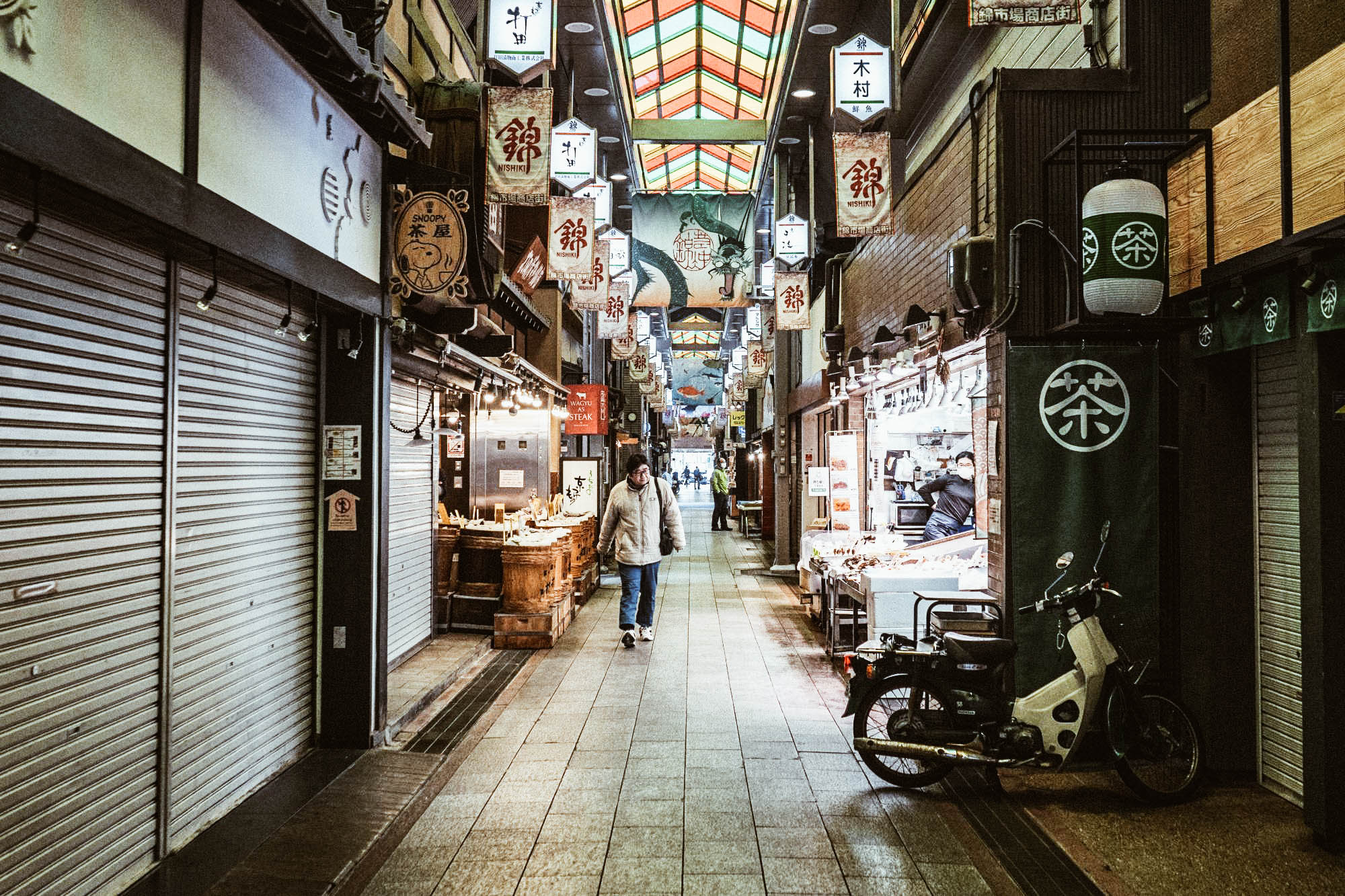
Nishiki's market, also known as "Kyoto's Kitchen" stretches for about 1.5km between Teramachi and Shinmachi districts in Kyoto. Among the increasingly popular souvenir shops, knife shops, the headquarters of traditional Japanese food suppliers and everything related to the kitchen, Oscar Boyd took this photo.
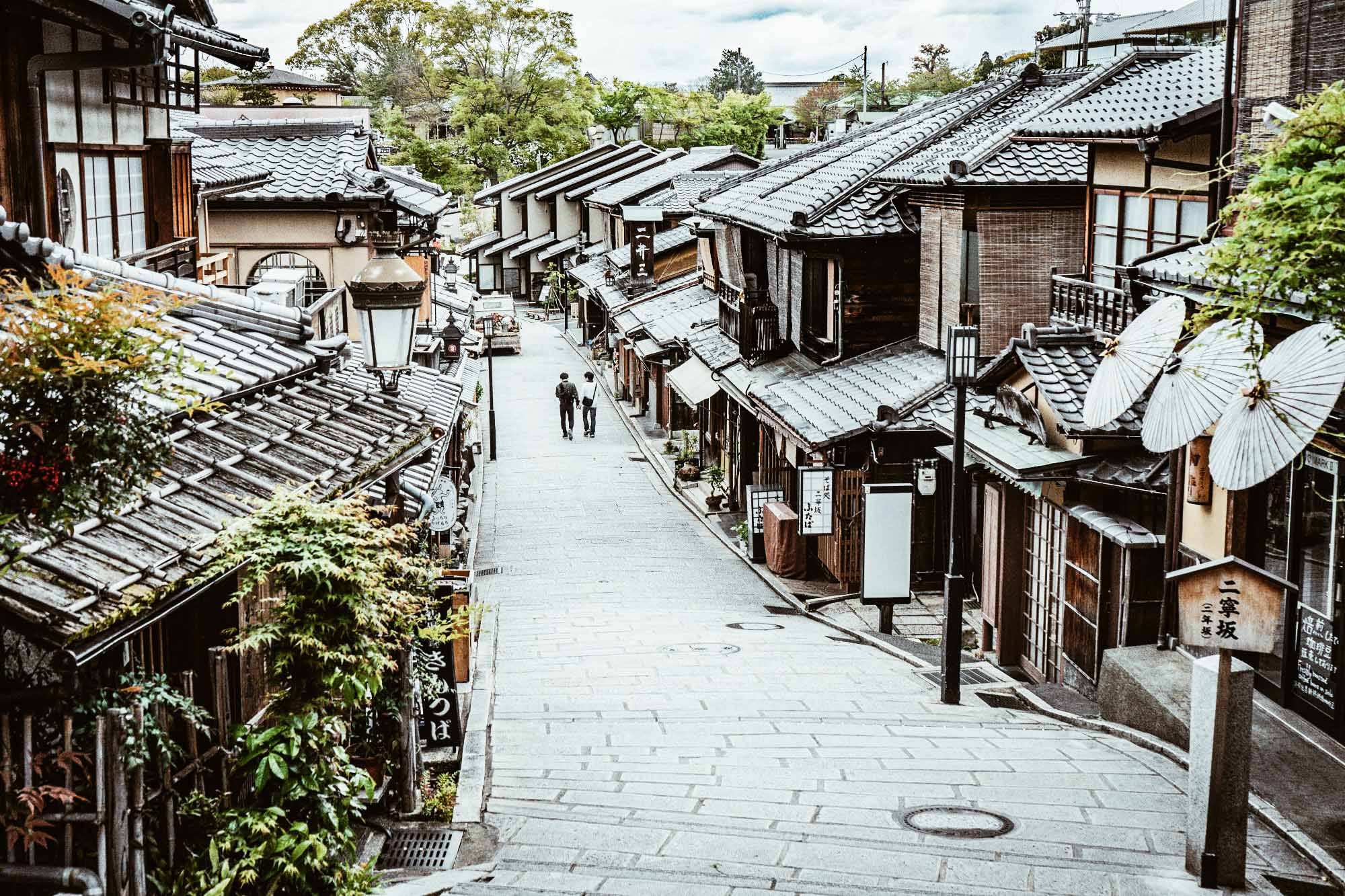
We move on to the wooden architectural tradition of Higashimaya. This area is very popular among people looking for a traditional Japan, without cement, glass and neon. This is how it looked under the eyes of Oscar Boyd at the end of April 2020.

Ginkakuji, the Silver Pavilion, built in the 15th century in the style of the Golden Pavilion, was not originally covered with the precious material. The complex has since become famous for its large Japanese garden which attracts around 5 million visitors every year. - Photos by Gabriele Bortolotti
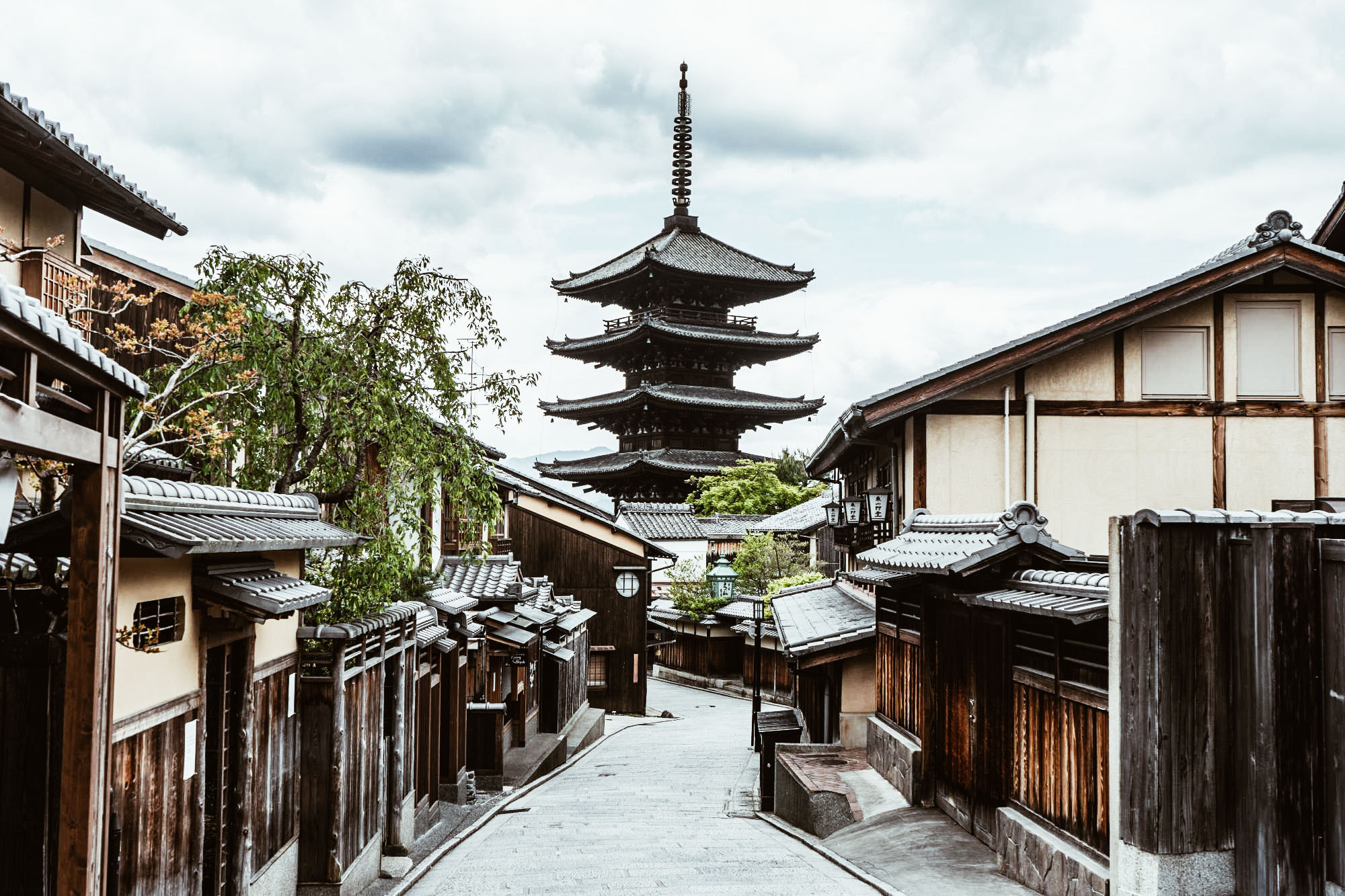
The Yasaka Pagoda, one of the landmarks of the upper area of Higashimaya District, the last permanent structure of the 6th century Hokanji Temple looked like this at the end of April. - Photos by Oscar Boyd
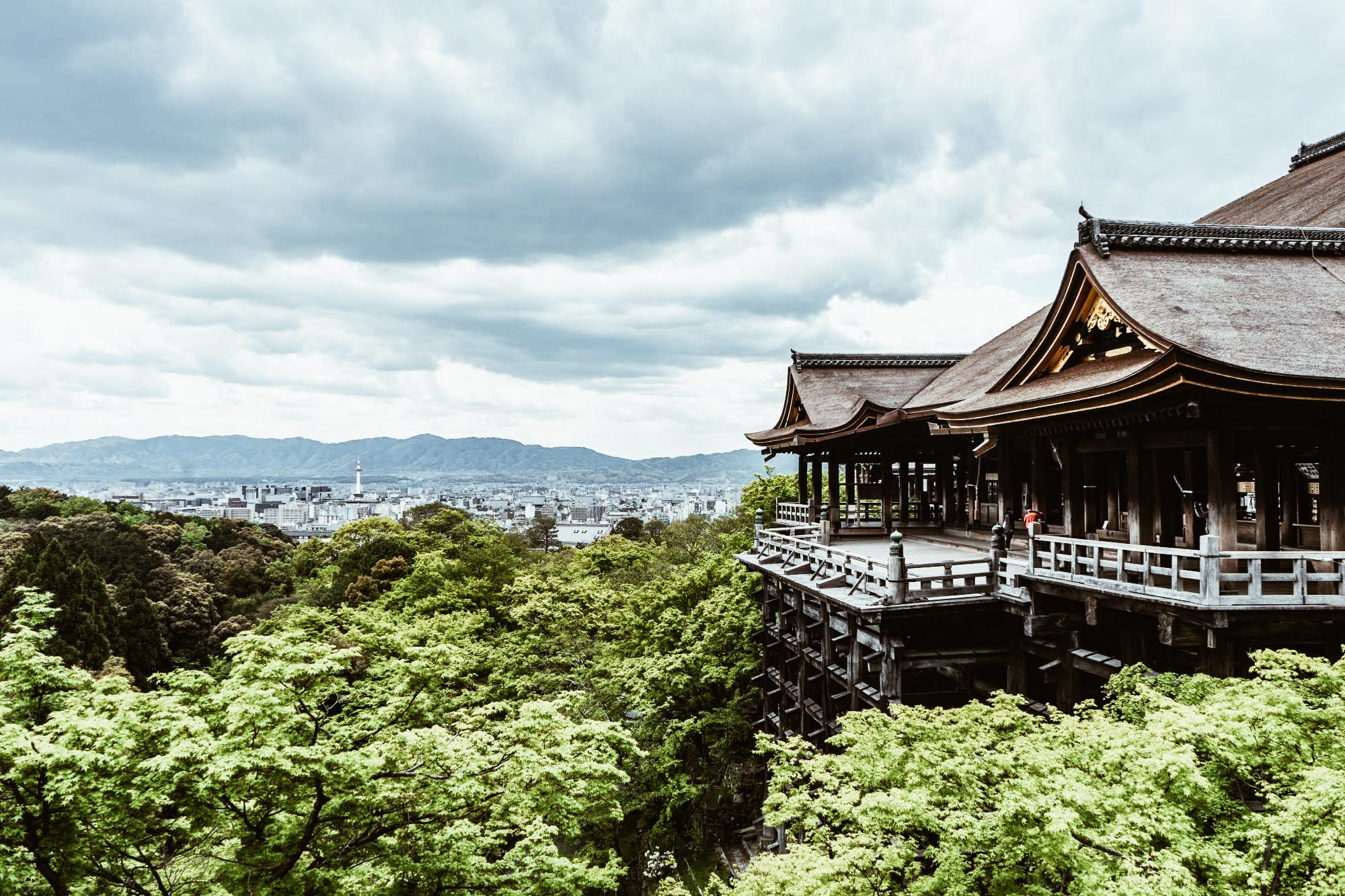
A UNESCO World Heritage Site, the Kiyamizudera temple on the side of Mount Otowa, in the eastern part of Higashimaya district is one of the landmarks not to be missed by visitors to Kyoto. Founded in 780 and rebuilt after a fire in the 15th century, work on the Okunoin Hall was completed in March. The temple attracts about 5 million tourists every year and yet in this weird 2020, it was completely empty. - Photos by Oscar Boyd
The Animal Crossing Phenomenon
As we already know, Japan is a land of trends that come and go, but the recent Animal Crossing phenomenon has involved the whole world, and we're not just talking about the gaming one.
Animal Crossing, Nintendo's worldwide phenomenon
written by: Sara
When it comes to writing about video games in our blog, I'm always strongly questioning whether or not to do so because there are myriad titles from the Rising Sun worthy of note! This time, however, we couldn't help but wonder: the video game in question has really won everyone over, especially during the quarantine period with its simplicity, its "chill" mood and its bright colors. Yes, I'm talking about Animal Crossing!
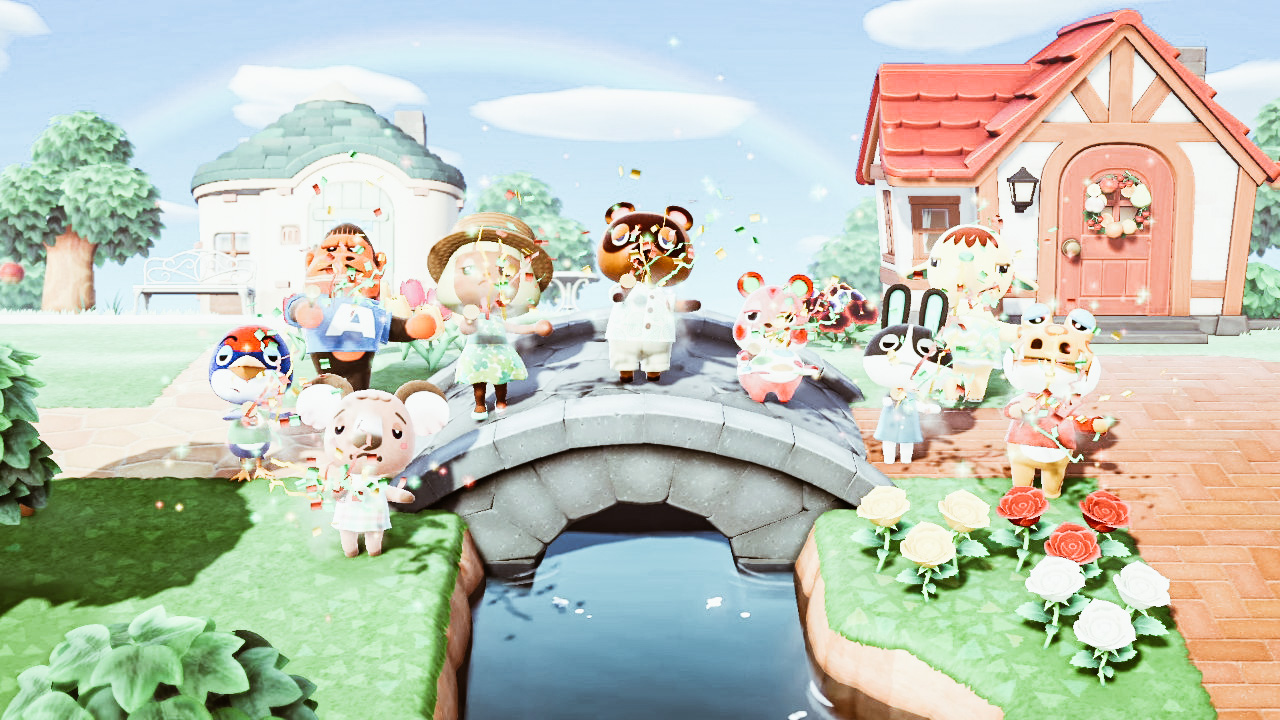
photo credits: gamereactor.it
The various versions
The Japanese title どうぶつの森 (Doubutsu no Mori) literally means "Animal Forest" and was developed for Nintendo by game designer Hisashi Nogami back in 2001 and quickly became one of the most popular video games ever. At its first release, in fact, there were several editions such as Animal Crossing: Wild World, Animal Crossing: Let's Go to the City, Animal Crossing: New Leaf and the very recent Animal Crossing: New Horizons; in addition to cute spin-offs such as Animal Crossing: Happy Home Designer and Animal Crossing Pocket Camp, the latter available for Android and iOS.

photo credits: pinimg.com
Simulator of life, this game catapults us into a world inhabited by curious anthropomorphic animals with which you can interact. There is no real goal, the strength of the series is to customize your village, collect objects, explore and... relax. In addition, the time flows exactly like that of our reality. The day and night, the seasons, the festivities, alternate following the rhythms of our daily life.
The latest edition of the game, New Horizons, is set in a deserted island, totally customizable thanks to the Terra Forming feature that allows you to let your imagination run wild and recreate environments of the most varied inspiration.

photo credits: twitter.com/ryuryu_12mj
Once you have created your own style, furnished the furniture, invited friends to visit the island etc etc etc what is left to do? Some might say that playability runs out, but it doesn't. In fact, events and updates make New Horizons an endless and fascinating video game where you can celebrate weddings, birthdays and ceremonies of various kinds. Create a party with friends, celebrate holidays such as Christmas, Easter, Tanabata, participate in festivals of various kinds, competitions and surprise events! Once again, Japan has given us something unique. A game to play when the world around us is stifling and hectic or simply when we want to escape, but we can't do it physically.
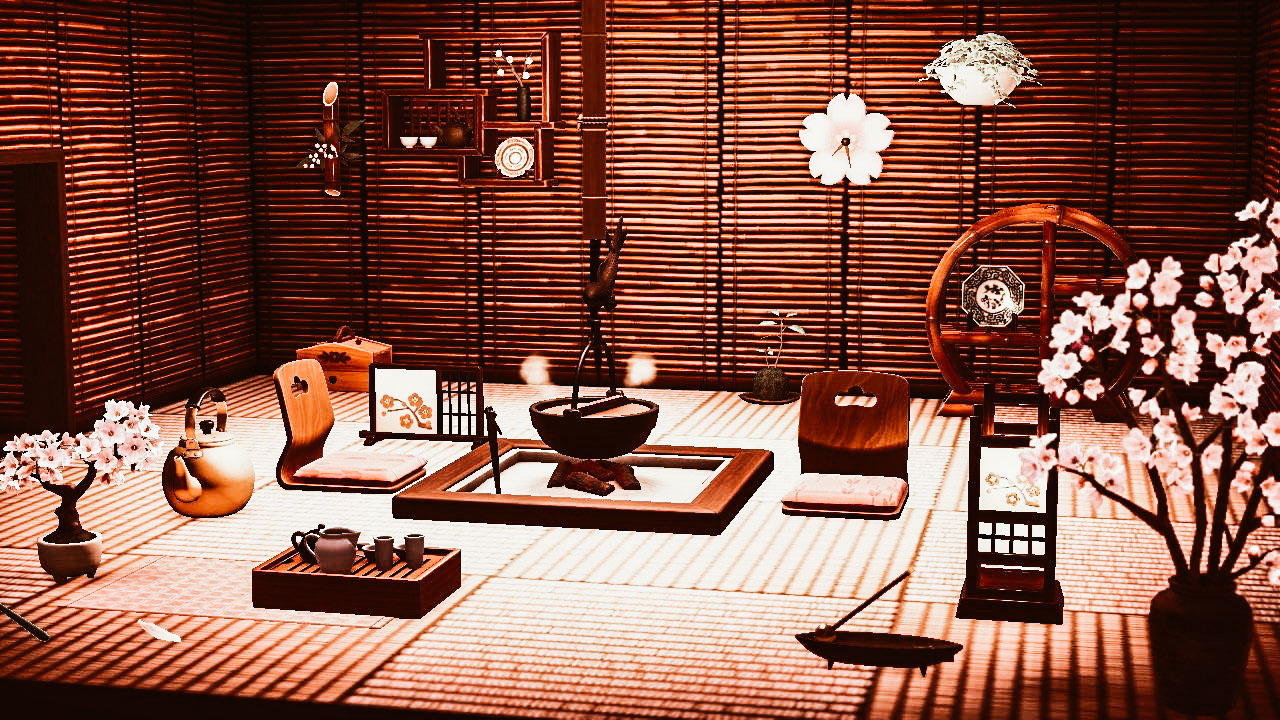
photo credits: twitter.com/opeope1006
All titles in the series are available on the official NINTENDO website.
Shikadamari, the deer gathering in Nara
One of Japan's most characteristic cities is Nara together with its deers and every year it is here that the Shikadamari takes place. But what exactly is this strange and unique phenomenon? What drives hundreds of deers to gather for an hour at this place in Nara Park every evening in summer?
Shikadamari, the phenomenon of the deer gathering in Nara
Author: Erika | Source: Soranews24.com
If you have ever been in the city of Nara, near the prefecture of Kyoto, probably one of the destinations you will have seen is Nara Park and its large deer population. The peculiarity of these deers is that they roam the city undisturbed, but not only that, they also ask for a lot of cookies! For this very reason, you may have had to run away from one of them while this curious deer was poking its nose into your bag.

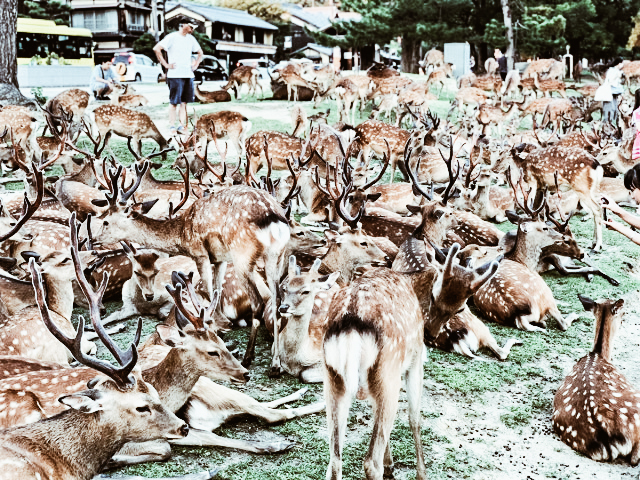
However, if you've come to this city in the summer, you'll find these nice creatures much less noisy in the evening. In fact, after sunset, a very particular phenomenon called "shikadamari" happens. This Japanese term translates as "deer gathering point" and is an unofficial term coined especially for this wildlife event.
What is Shikadamari
After sunset on summer evenings, around 6:30 p.m., deers gather near Nara Park to stop in this particular place in front of the National Museum of Nara, right inside the park. Indeed, it is not unusual to find deers relaxing in the park, but it is rare to see a large number of these animals all gathered in the same spot. The most disconcerting thing is that they all gather in the same place, at the same time and for the same amount of time. From 6:30 p.m. to 7:00 p.m., you can see the deers sitting in silence. However, after 7:00 p.m., they stand up and return to the different areas of the park.
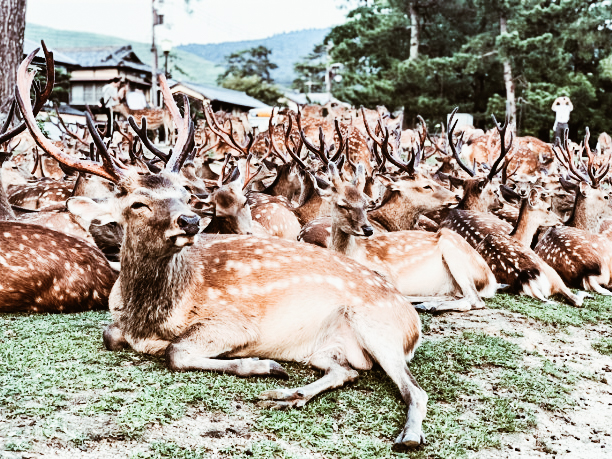
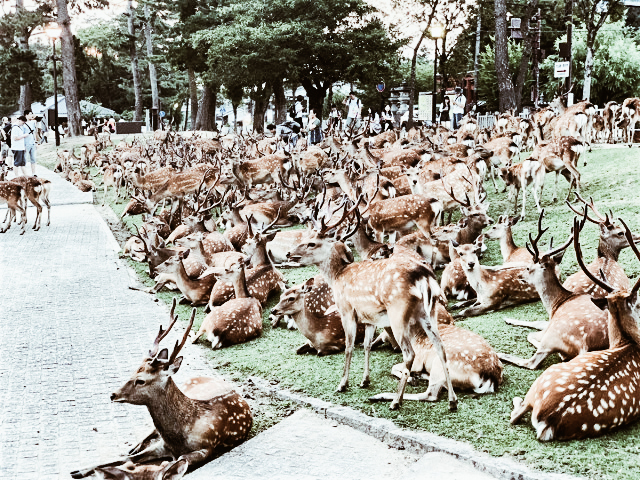
According to a survey by the Nara Deer Preservation Foundation, the Park is home to about 1388 deer, and almost half the wildlife population participates in this gathering. What could that indicate?
Plausible explanations
Therefore, one of the plausible explanations for this phenomenon is that deers gather in this particular place to cool off. After all, with the hot temperatures of the Japanese summer, in this place we find a breath of fresh air instead. Despite everything, this very piece of land in front of the museum is one of the sunniest parts of the entire park during the day. Theoretically, therefore, the earth is very overheated, but perhaps it is this mix of warm earth and fresh air that attracts the deer to the shikadamari.

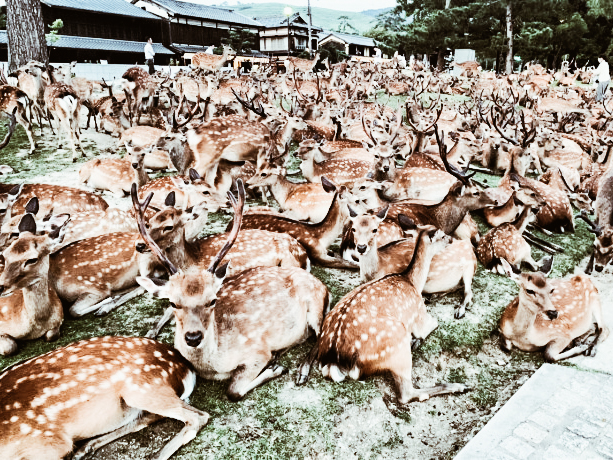
In this regard, the Nara Deer Preservation Foundation says:
"We have reports of deer gathering in front of the Nara National Museum. We don't even know why they gather there. We're sorry we can't be of any help".
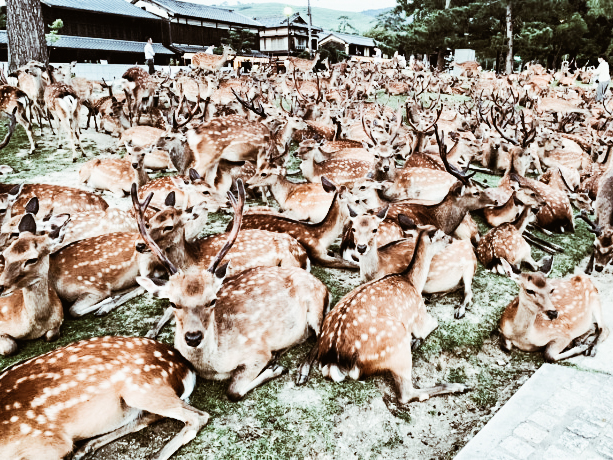
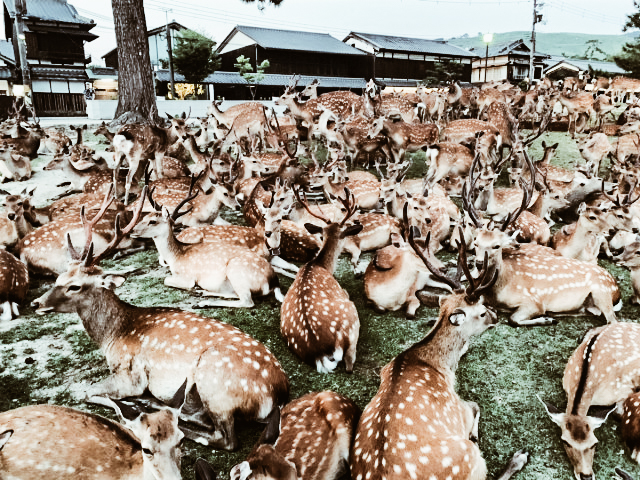
With this answer, therefore, the Shikadamari phenomenon remains to all intents and purposes one of the mysteries of Japan. And do you have any particular idea why deer gather every night in summer at this very spot in the park? Let us know on on our Facebook page or in the comments below!
TENOHA &| TASTE: it's Tanabata time
We can come back to love each other in compliance with the rules with the TANABATA aperitivo at TENOHA Milano! Summer has already begun and what better way to start again than by celebrating the Japanese Star Festival? As always, TENOHA makes your journey to Japan lighter and it always makes you feel part of the Rising Sun, thanks to its events and its food prepared especially for you by true Japanese chefs. By popular demand, the special TANABATA aperitivo is back again this year!
E' tempo di Tanabata da TENOHA Milano
Autore: SaiKaiAngel

Are you feeling more Vega or Altair? We know that you want to dream and cross the Milky Way to meet your loved one, but also to write your desire to see it come true. Here at TENOHA Milan you can do it! Write your wishes on the Tanzaku (those wonderful colored sheets of paper fluttering attached to the bamboo branches) and then see it dance in the wind among the leaves of the bamboo tree.
Because Tanabata (七夕 "seventh night") is the feast of the stars in love, a romantic feast that if TENOHA Milan weren't there you could only celebrate in Japan. But luckily, TENOHA Milan exists and it is that corner of Japan that you have always wanted. Live a romantic story, special days, feel Vega or Altair and come here to TENOHA Milan!
Ok the romance, but do we want to talk about what you can taste during TANABATA?
TENOHA Milan prepared for you 1 Drink + Aperitif box + Takoyaki (Japanese octopus meatballs) complete with show cooking + Kakigori (Japanese granita) All accompanied by Asahi Beer 20 ml.
Information
Where: TENOHA MILANO Via Vigevano, 18, 20144 Milano
When: From July 7th to 12th from 18.00 to 20.30
Cost: 12€
Event powered by Asahi Super Dry
Reservation is preferable, here you can find the phone number and email to reserve your seats: (+39) 02 8088 9868 | taste@tenoha.it
For more information: https://www.tenoha.it/events/aperitivo-tanabata/







